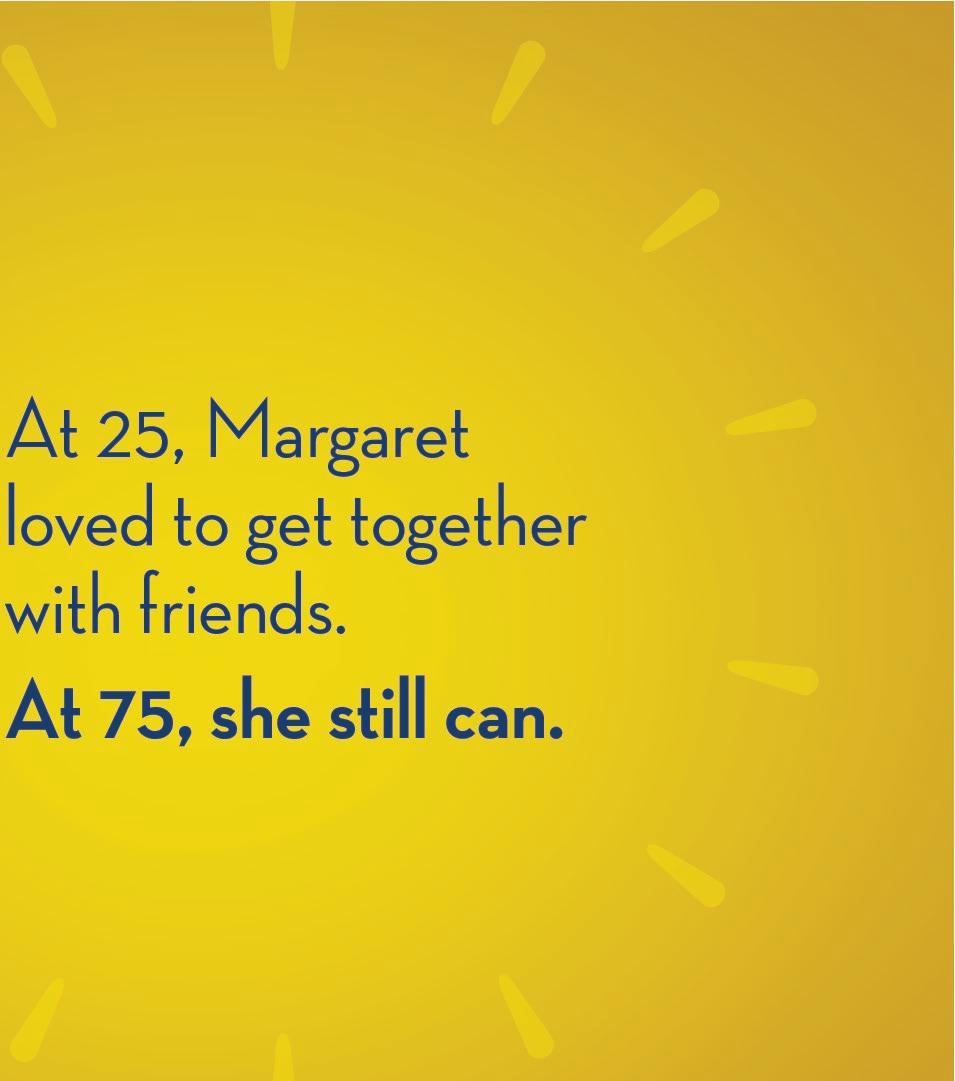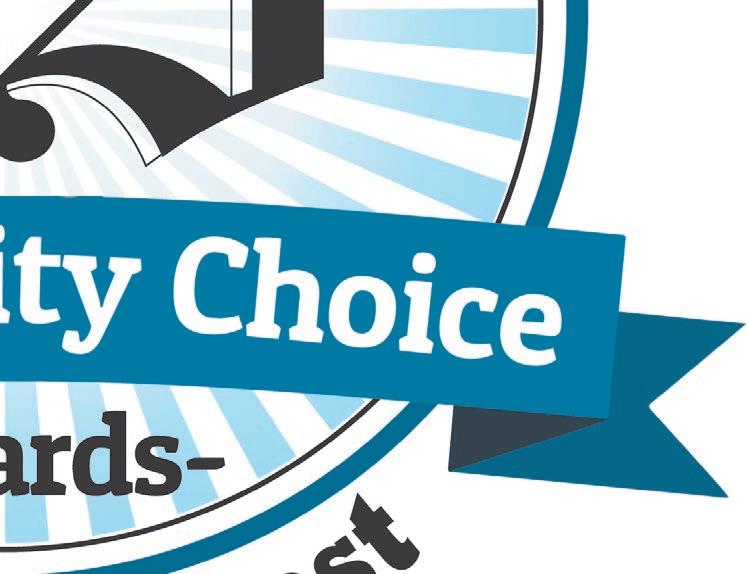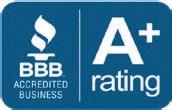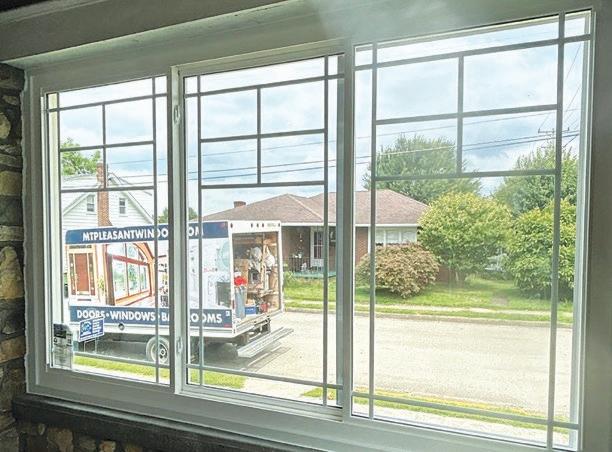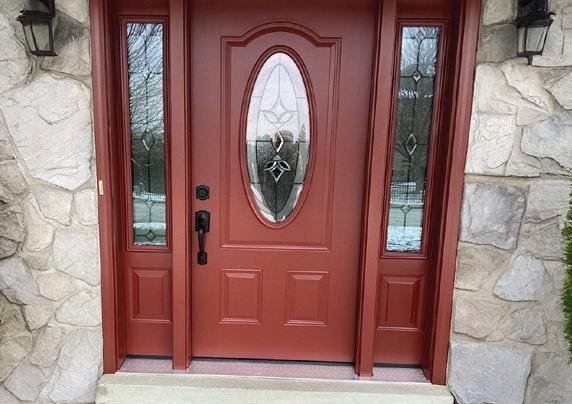




















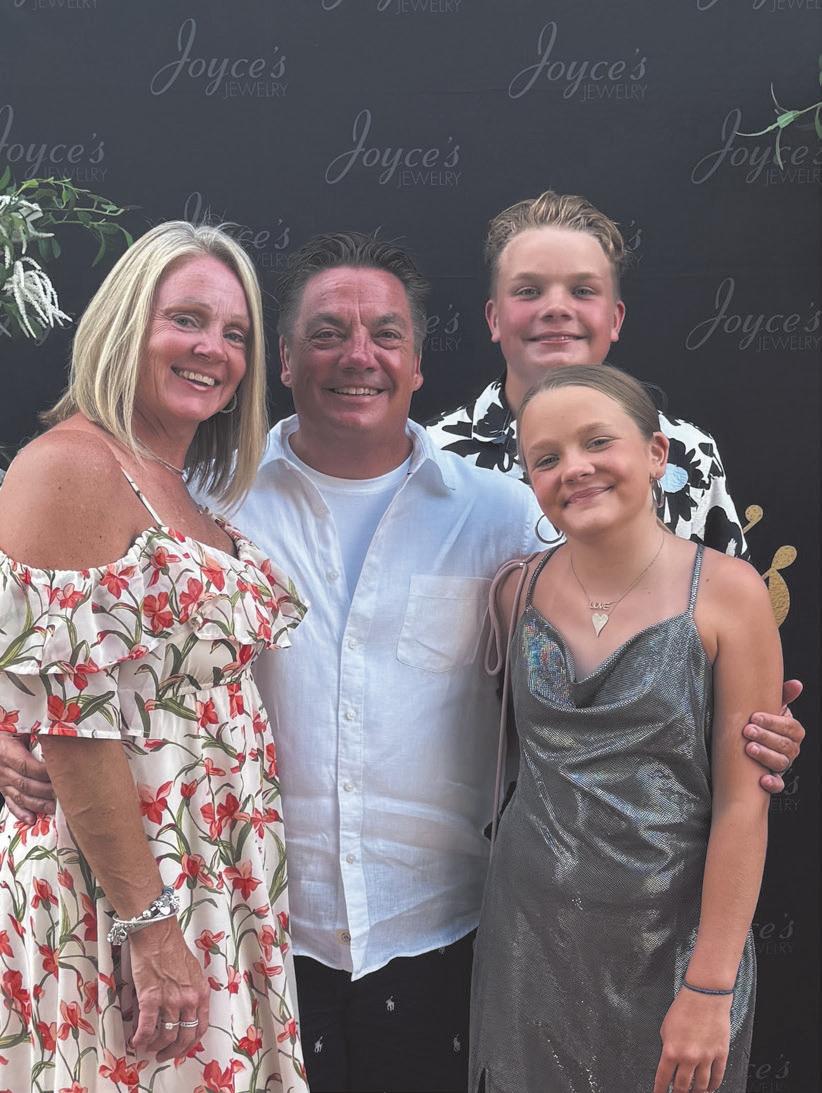



SUPPORTING THE HEARING HEALTHCARE OF OUR COMMUNITIES FOR 46 YEARS




































SUPPORTING THE HEARING HEALTHCARE OF OUR COMMUNITIES FOR 46 YEARS










Medicare is heading into 2026 with several changes that will affect thousands of seniors, from modest premium increases to new limits on prescription drug costs and updates to telehealth coverage. While most changes continue long-term improvements started in recent years, understanding what’s new can help local retirees, caregivers and families plan ahead.
Here’s what Medicare enrollees in our region should know for 2026.
Medicare Part A, which covers hospital and skilled nursing care, remains mostly unchanged. The standard deductible, what you pay if you’re hospitalized, will rise slightly to about $1,700 per benefit period,
up from $1,676 in 2025. Daily copayments for extended hospital and nursing home stays will also increase modestly.
Most Southwestern Pennsylvanians won’t pay a monthly premium for Part A, since it’s typically covered through payroll taxes. However, the Medicare Hospital Insurance Trust Fund that supports Part A continues to face long-term financial strain, with projections showing possible shortfalls by 2033 if no policy changes are made.
Medicare Part B, which covers outpatient care, preventive visits and doctor services, will see moderate cost increases. The standard monthly premium is expected to
rise from $185 in 2025 to about $206.50 in 2026. The annual deductible will increase from $257 to around $288.
The Centers for Medicare & Medicaid Services (CMS) says these increases reflect nationwide growth in healthcare spending, especially for outpatient procedures and physician care. CMS will also boost physician payment rates by 3.3% next year.
While the 2026 Social Security cost-ofliving adjustment should offset much of the added expense, some fixed-income seniors across Washington, Greene, Fayette and Allegheny counties may notice tighter budgets. Higher-income enrollees will continue to pay income-based surcharges, known as IRMAA.

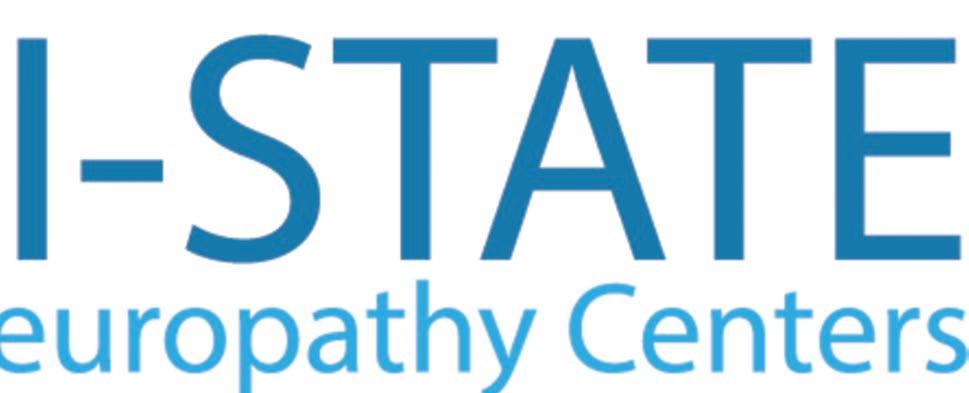

Are you tired of numberless, tingling, burning, balance issues, loss of sleep due to your peripheral neuropathy?






Are you like most people with this diesease and have taken Gabapentin, Lyrica, Neurotin or other medications without results or improvements? Do your symptoms continue to get worse?
“I suffered for 8 years with horrible neuropathy pains and struggling with no sleep. After completing the program, I have NO more neuropathy symptoms and I’m sleeping through the night.”
“I suffered for close to 3 years and thought I would end up in a wheelchair for the rest of my life. I am 90% better and so happy I have my life back.”


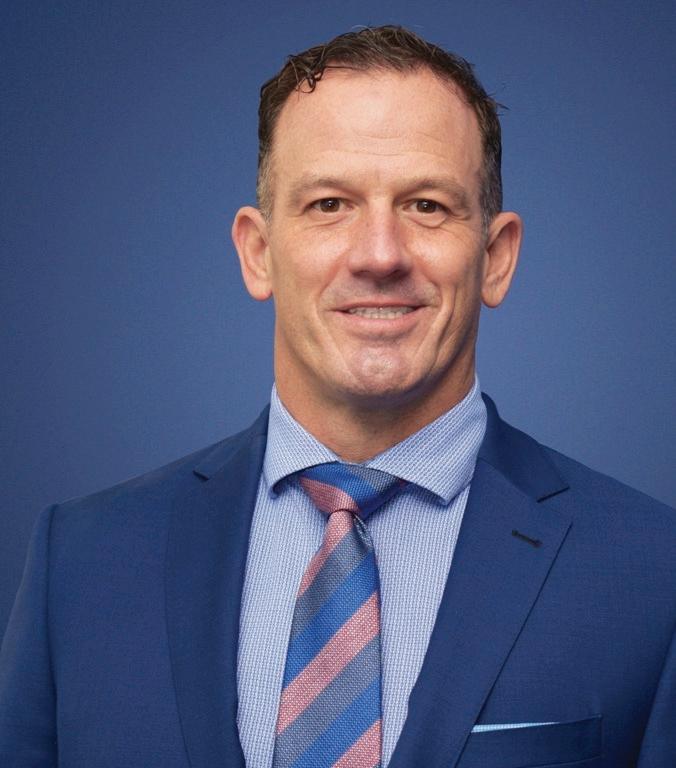


Enrollment in Medicare Advantage plans continues to rise, and seniors in Southwestern Pennsylvania will once again have a wide range of choices in 2026. CMS projects the average monthly premium will fall from $16.40 to about $14, while most plans will continue offering popular extras such as dental, vision, hearing and fitness benefits.
Virtually all Medicare beneficiaries in our region will have access to at least one plan, with most seeing 10 or more options during open enrollment.
A notable change affects people eligible for both Medicare and Medicaid. These “dual eligible” plans will begin adopting a single, combined health plan ID card and an integrated health risk assessment by 2027, with implementation steps beginning next year. These updates aim to simplify care coordination for seniors managing multiple types of coverage.
The biggest Medicare change for 2026 will be in prescription drug coverage. Under the Inflation Reduction Act, beneficiaries’ outof-pocket costs will be capped at $2,100 per year, providing critical relief for seniors managing expensive prescriptions.
The standard Part D deductible will rise to $615, but average premiums will drop slightly to about $34.50 per month for standalone drug plans, and closer to $12 for those bundled with Medicare Advantage.
For seniors in our region who take specialty medications, this spending cap could mean savings of hundreds or even thousands of dollars per year.
Medicare’s preventive benefits, including screenings, annual wellness visits and immunizations, will remain free when provided by a participating provider.
Mental health coverage will also stay robust. The program permanently removed the old 190-day lifetime limit for inpatient psychiatric care, and outpatient counseling and therapy sessions remain covered. Many of these visits can still be accessed via telehealth, helping local seniors maintain care without the need for frequent travel.
After Sept. 30, 2025, most of the temporary telehealth flexibilities introduced during the COVID-19 pandemic are set to expire. Starting in 2026, Medicare will again limit most non-mental-health telehealth visits to certain geographic areas or approved medical facilities.
However, mental and behavioral health telehealth services will remain widely available, including audio-only visits, ensuring continued access for patients in rural parts of Greene, Fayette, Washington and Allegheny counties where in-person care can be harder to reach.
Medicare continues to emphasize improving access to care for underserved and rural populations. CMS is strengthening data collection and oversight of Medicare Advantage plans to promote health equity and improve care quality.
Physician payment rates will increase modestly (around 3%), with no across-theboard cuts or major reimbursement changes planned.
Overall, the 2026 Medicare updates bring gradual but meaningful adjustments. Seniors in our region can expect:
• Slightly higher Part B premiums and deductibles
• Lower average premiums for Medicare Advantage and Part D
• Continued access to preventive and mental health benefits
• Some rollback of pandemic-era telehealth coverage
During the open enrollment period (Oct. 15–Dec. 7), beneficiaries should review their coverage options carefully. Seniors can compare plans, premiums and drug coverage at Medicare.gov or get free local assistance through the State Health Insurance Assistance Program (SHIP).
Medicare’s 2026 changes are designed to stabilize the program, control costs and improve access to essential care. While most Southwestern Pennsylvania seniors will see modest cost increases, new protections, especially the $2,100 annual prescription cap, will bring welcome relief for those managing chronic conditions.
As always, taking time to review your plan during open enrollment is the best way to ensure your coverage fits your health needs and budget for the year ahead.











With the annual enrollment period for Medicare quickly approaching it’s important that individuals understand what their options are.
October 15th thru December 7th Medicare recipients may choose to do nothing and let their plan rollover into 2026 or switch plans.
Year to year Medicare Advantage plans and prescription drug plans can change. Your medical condition and outlook can change as well as your prescription utilization. During this period Medicare recipients may change their Medicare Advantage plan or prescription plan without any medical underwriting.
The main exception to plan changes during the Annual Enrollment Period is Supplemental coverage which in
most cases require completion of an application which is medically underwritten. If you currently have supplemental coverage it is advisable to get updated quotes on your coverage to see if you can lower your premiums. Supplemental to supplemental changes can be made anytime during the year.
Understanding the complexities of coverage is confusing to most individuals. From understanding the provider networks, HMO vs. PPO, drug formularies, plan coverages, copayments and out of pocket exposure are a few of the issues that affect one’s choice of plan.
The most important and basic decision an individual has to make and understand is the differences between Supplemental coverage versus Advantage plans.

Supplemental Coverage: Secondary coverage leaving Medicare as primary coverage. Doesn’t include prescription coverage so a standalone Part D (Rx) plan is generally required.
Network – National Provider Network.
insurers replacing Medicare as primary insurer.
Network – HMO, PPO plans are the most popular in Western Pennsylvania. Most plans include prescription coverage.
Find a good Broker who represents all or a majority of the carriers. A Broker should work for you not the carrier. Ask friends on Medicare if they have a Broker they recommend.
Having a good Broker that specializes in Medicare can save time and energy when determining what plan meets your needs.
Your Medicare plan choice should be an individual choice. Your spouses and friends may say they are on the greatest plan, that plan may be a poor decision for you. One medication can be the difference of hundreds of dollars a month with a poor plan choice.
A lot of Medicare recipients attend the yearly carrier meetings. This is a great opportunity to understand “their” plans. In Western Pennsylvania we have over thirty Medicare Advantage plans available, take time to look at all your options to determine which plan meets your needs for 2026.
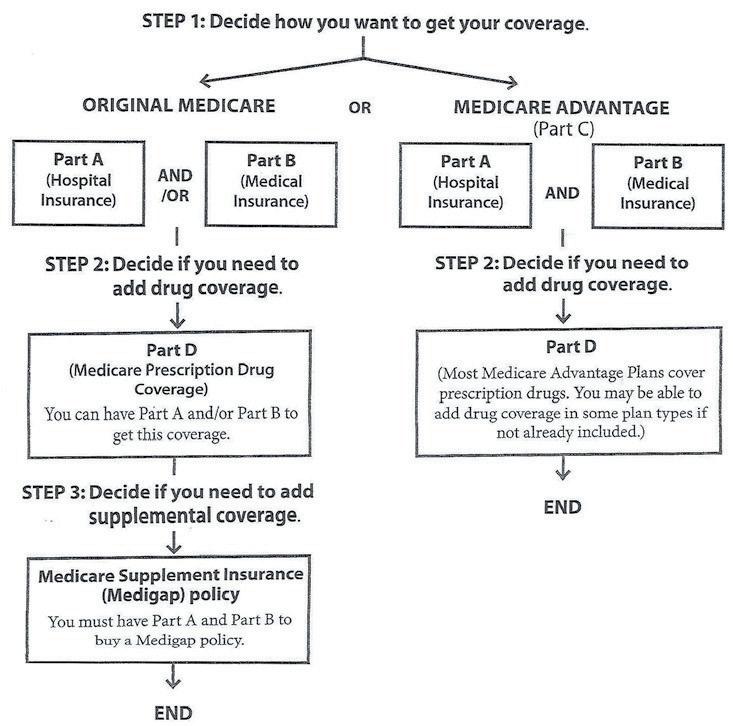













Long-term care is an important component of financial and personal wellness planning. Planning for long-term-care can help aging individuals maintain their independence and quality of life into their golden years.
According to the National Institute on Aging, long-term care (LTC) involves a variety of services that accommodate a person's health or personal care needs when they can no longer perform everyday tasks on their own. LTC can help people with chronic illnesses, disabilities or other conditions. LTC can be expensive, but planning for such needs can help families avoid financial strain and stress, and also provide peace of mind.
One of the initial steps when planning for LTC is to identify the available options. LTC is multi-faceted and can come in a variety of forms. LTC can involve in-home care, with a care provider coming into an individual's home to offer services like
housekeeping and assistance with personal care. In addition, LTC can take place in nursing homes or assisted living facilities. Adult daycare facilities also may be considered part of LTC.
It's important that families recognize that traditional health insurance does not cover the costs associated with LTC. In addition, Medicare cannot be used for LTC in most cases in the United States. It is essential to earmark funds or find alternatives to cover these costs.
According to Medicare.gov, some insurance companies will enable people to use life insurance policies to pay for LTC. Long-term care insurance also merits consideration. This insurance may cover LTC facilities or even home care and medical equipment. Families can explore all their options and find a policy that aligns with their needs and budgets.
Additional financial tools to consider are a Health Savings Account (HSA) or a Flexible Spending Account (FSA), which allow
for tax-advantaged savings specifically for health care expenses. Those with limited income can be eligible for Medicaid in the U.S., which can pay for nursing home care. However, it is important to research which homes accept Medicaid as a form of payment.
People can work with licensed professionals to solidify long-term care and financial plans. An estate attorney can help create a durable power of attorney and a living will to ensure that health care and financial decisions are managed according to a person's wishes if he or she becomes unable to do so. An irrevocable trust also could be beneficial in managing assets and potentially shielding families from LTC costs.
Families should discuss health care wishes and other financial plans as they pertain to long-term care. Early planning can help families navigate caring for aging individuals. ◆
A family-owned, specialized advisory firm that has assisted the senior market with their Medicare and healthcare options for 39 years.
We strive to help our clients find the right insurance options for them - even often finding programs they didn’t know existed. We always strive to go above and beyond for our customers, and work to provide the best experience.

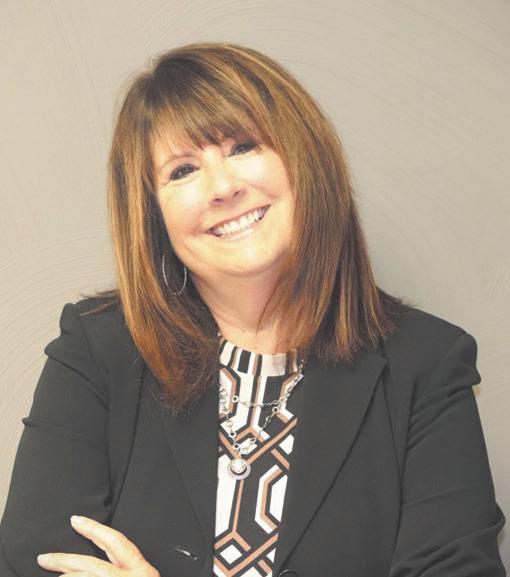
We take the time to sit with each client and provide a detailed, personalized consultation specific to their health needs. Call our team and find out what Medicare plan options are available to you for 2026. We offer multiple carriers in the Western Pennsylvania market*. Call today to set up an appointment!
*NOT AFFILIATED WITH OR ENDORSED BY
By Jen Garofalo
Three years ago, Susie Anderson’s doctor called to tell her they needed to speak in person.
She knew something was wrong.
A routine mammogram had detected a lump in the Uniontown woman’s left breast; a biopsy revealed it was cancer.
The 69-year-old mother said she cried as she reassured her daughter Ashley and son Johnathan that everything would be all right.
“God’s got this. We’re all in this together,” she recalled saying.
Then, her resolve to beat breast cancer kicked in, and she told herself, “I have cancer, but cancer doesn’t have me.”
Susie is among the 1 in 8 women in the United States who are diagnosed with breast cancer each year. She’s also among the more than 4 million survivors.
According to the National Breast Cancer Foundation, a woman in the U.S. is diagnosed every 2 minutes. Those cases caught early – like Susie’s – have a fiveyear survival rate of 99%.
Susie and her children live in a Uniontown home owned by Fayette Resources. The nonprofit provides residential support to people with
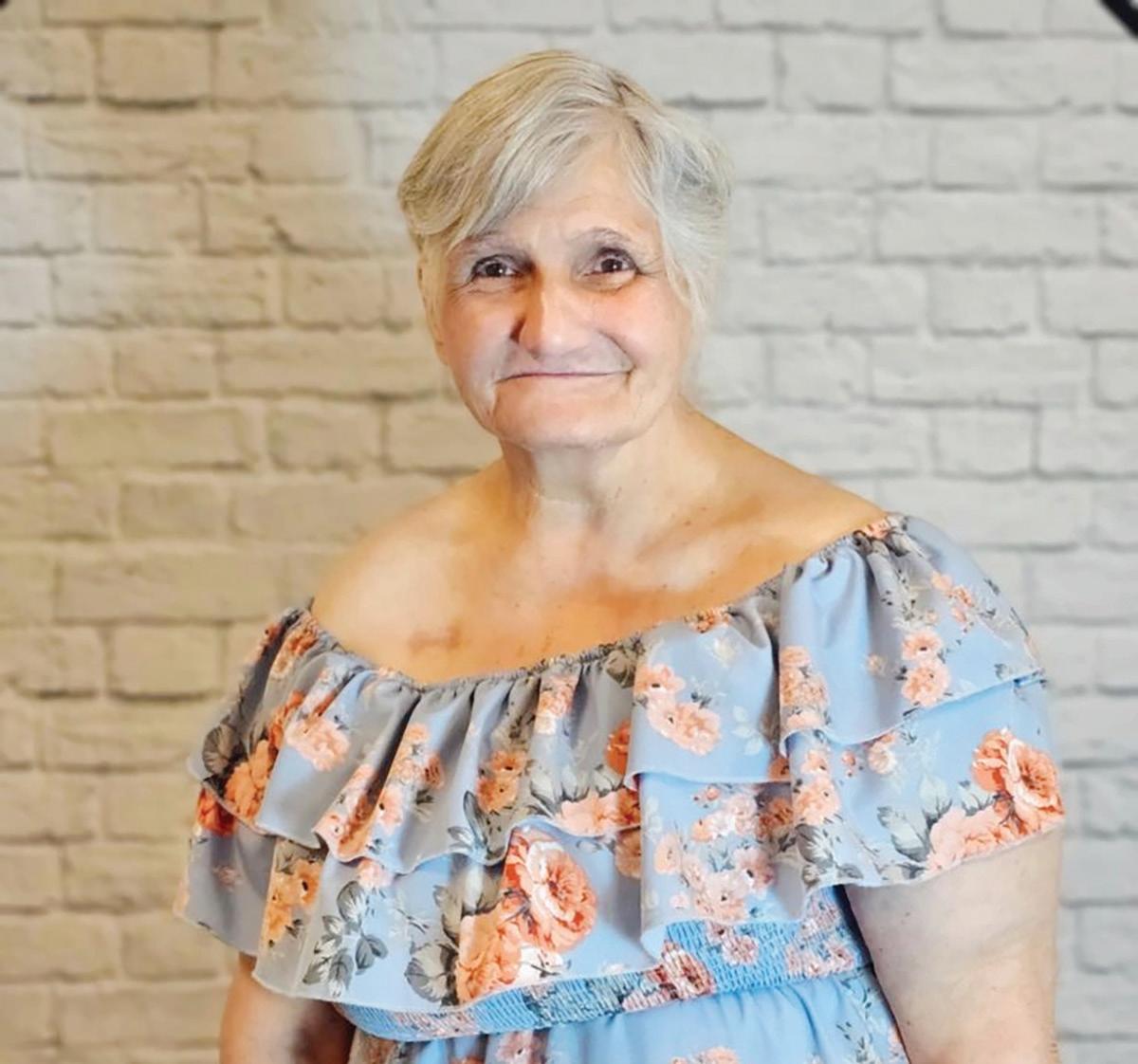
Susie Anderson of Uniontown maintains a positive outlook.
intellectual disabilities like Susie and her children.
Throughout her treatments, said Linda Ohler, a psych coordinator at Fayette Resources, Susie uplifted others with her positive attitude.
“She is the most loving person that you could ever meet (and) to meet her and
be around her, you can’t help but love
her,” said Ohler.
Susie’s chemotherapy and radiation lasted nine months.
The most difficult part of those cancer treatments, Susie said, was losing her hair and worrying about whether it would grow back. She bought a wig on Amazon and used turbans to cover her head.



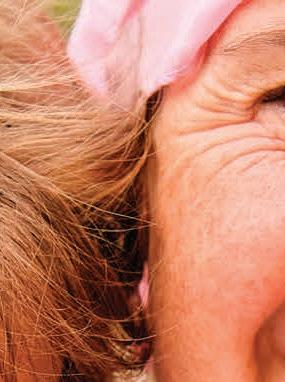


























“I thought I looked kinda pretty,” Susie said, joking that she could use them as part of a Halloween costume.
In February 2023, she got the news that she was cancer free. On her way out of the treatment center, Susie rang the bell – a symbolic gesture for patients who have completed their treatments.
“I about rang it off the wall,” she said.
That was followed by a steak dinner, another milestone moment for Susie, who had lost 70 pounds during her treatment.
“I would be getting to eat what I wanted to eat without getting sick,” she said.
Caregivers provide care to their patients so they can overcome illness or injury, or to support individuals plagued by chronic conditions. Caregivers may be paid professionals who are employed in the medical field, but many are friends and family members who step up when needed. The Johns Hopkins Bloomberg School of Public Health reports there are 53 million unpaid caregivers providing care for loved ones in the home across the United States. It is estimated these people provide more than $870 billion a year in service to society in terms of caring for others. In 2022, Statistics Canada estimated that 13.4 million Canadians age 15 or older (42
A ceramic pink Christmas tree – a gift from the nurses at the treatment center she’d made friends with – came home with her that day. When she brings it out for the holidays, Susie looks at the tree and thinks of those who have breast cancer and says a prayer for them.
There were also plenty of celebratory activities planned, like a June trip to Lake Erie to boat, spend time on the beach and at the zoo, and go shopping.
“Susie is such a ray of sunshine and positivity. If that has anything to do with your recovery, then that’s why she did so
well,” said Fayette Resources Program Specialist Chelsea Settles.
Ohler agreed: “I hope one day I can be like her.”
While her treatments are behind her, Susie has to have a mammogram of her left breast every three to six months. She wants women to stop saying “not today, maybe tomorrow” about scheduling a mammogram. The simple procedure saved her life.
“I just thank God that I’m doing good,” Susie said. “And I pray for everyone out there who has cancer. They’re not alone because God loves them.” ◆

percent of the population) provided unpaid care to either children or dependent adults. Unpaid caregivers have been called upon more readily due to certain factors, namely that people are living longer and there are limited resources available to provide care.
The cost of long-term professional care is out of reach for many families when services are not covered by private insurance or government-subsidized health programs. ◆









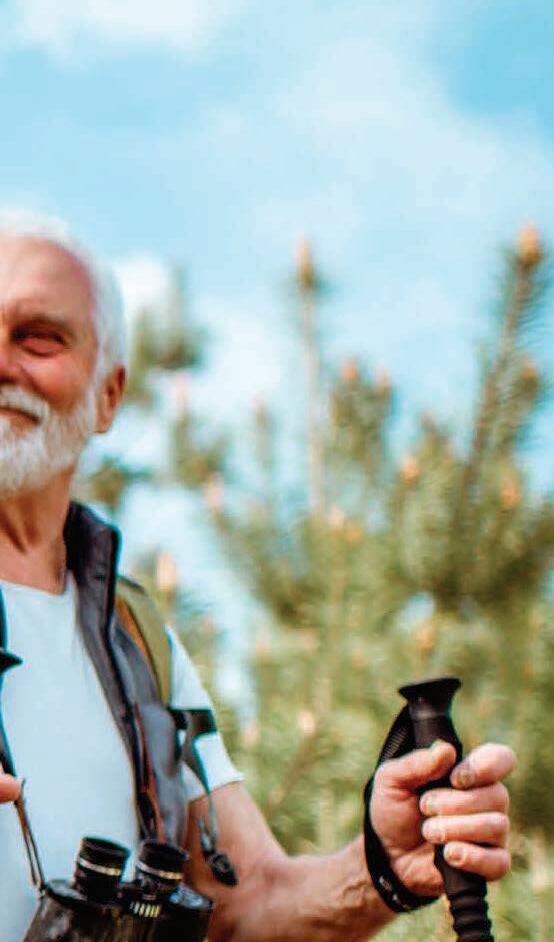







Our highly specialized team of fellowship-trained bone and joint experts offers an array of complex surgical and non-surgical procedures and therapies. At WVU Medicine Uniontown Hospital Orthopedics and Spine Center, we deliver a personalized approach to meet each patient’s goals.










By Karen Mansfield
After 80 years in the Washington, D.C. area, AMVETS, one of the nation’s largest veterans service organizations, has moved from one Washington locale to another.
AMVETS officially opened the doors to its new national headquarters at the former Beth Israel Synagogue in Washington on Saturday.”
Pennsylvania’s Washington County has one of the highest numbers of veterans per capita in the United States, which factored into the organization’s decision to move to Southwestern Pennsylvania.
“We are just so happy to be becoming a member of this community. We truly feel we can be a beacon to veterans, not only in Washington County and Southwestern Pennsylvania, but across the country,” said AMVETS National Commander Paul M. Shipley. “We are planning on opening up this facility to the community and plan on having bingo and music events and other events.
AMVETS is a service organization that works to improve the quality of life for veterans from all branches of the U.S. government and their families. It provides assistance like job training, VA claim assistance, and educational scholarship.
The building on North Avenue houses the organization’s offices and will host meeting and community events.
AMVETS past commanders and members from nearly a dozen states, including California, Florida and Massachusetts, attended the opening.
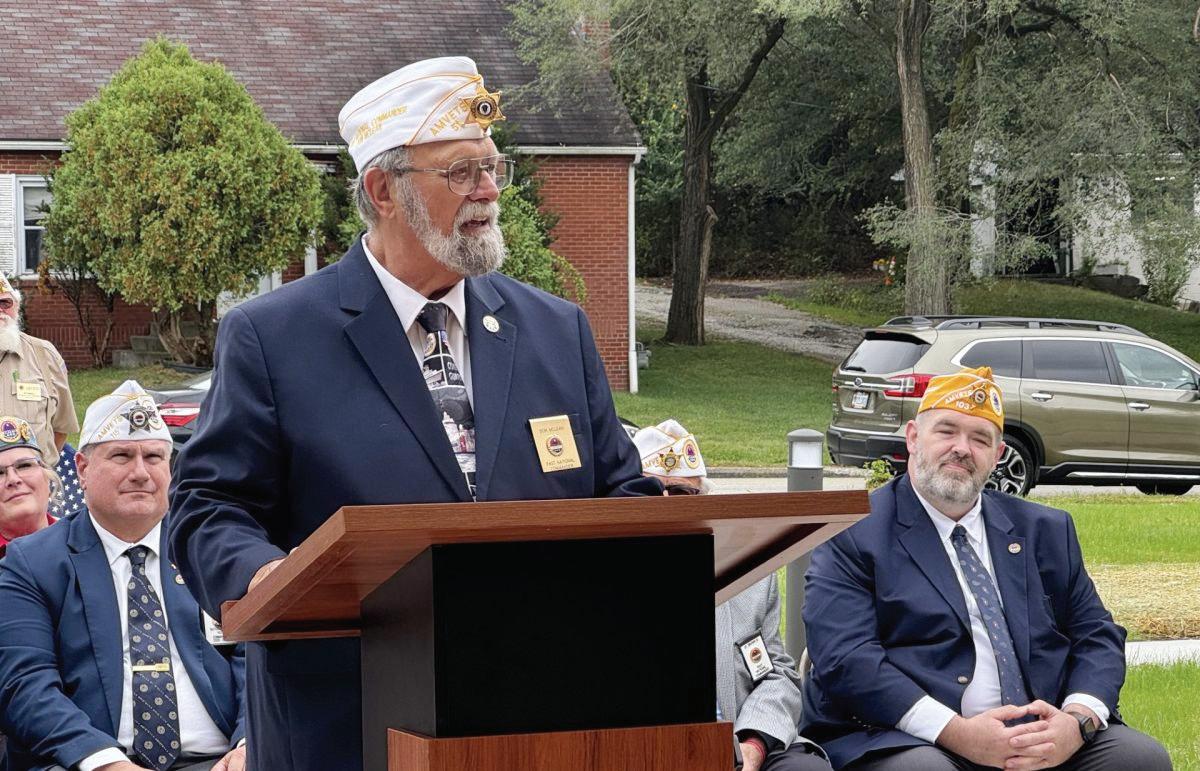
Donald McLean, AMVETS past national commander who serves on the building committee, said the AMVETS had explored more than a dozen locations – in person and online – but was drawn to the Washington space.
“The biggest thing is, from the first day we walked through this building, everybody had the same thing in mind: this building can hold every aspect of our organization, our ladies’ auxiliary, Sons of AMVETS, our riders’ group, our juniors’ group, so our (AMVETS) family will be in one place. And here we are,” said McLean.
The Beth Israel Synagogue was sold to AMVETS in 2024 for $525,000 for the new national headquarters.
As part of the sale agreement, Beth Israel congregation will have use of the chapel on
the property for services.
A groundbreaking for the new AMVETS headquarters was held in Dec. 2024.
Rocky Bleier Construction Group, based in Carnegie, oversaw the project.
Bleier, the former Pittsburgh Steelers great who won four Super Bowls with the team, was injured in service in the Vietnam War, earning the Purple Heart and the Bronze Star. Dorland Anderson, Post Commander of AMVETS Post 72347, said an elevator will be installed in the building in the near future to improve accessibility.
A ribbon-cutting ceremony took place on March 7, during the AMVETS weeklong national executive committee meetings. ◆




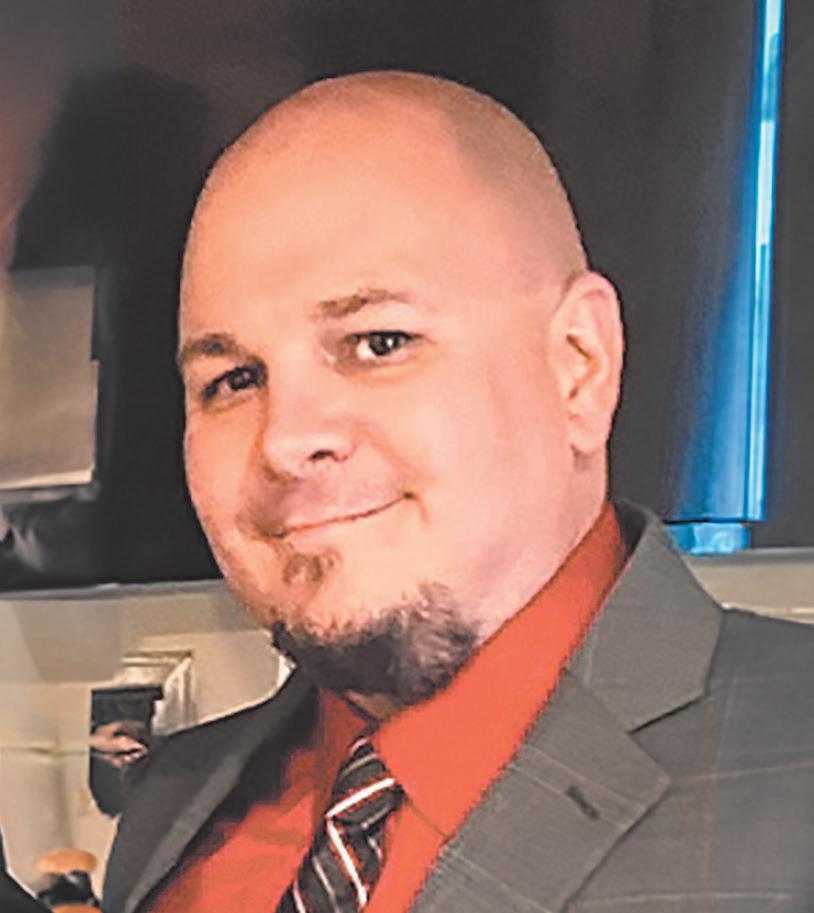
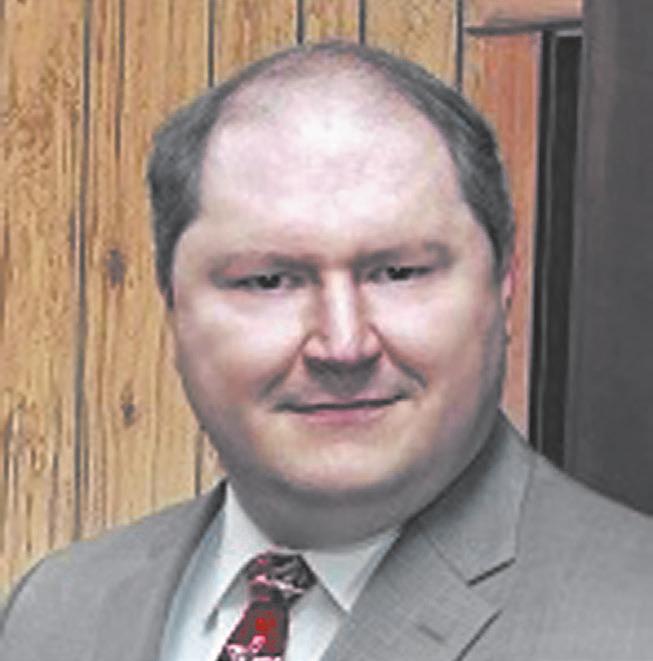
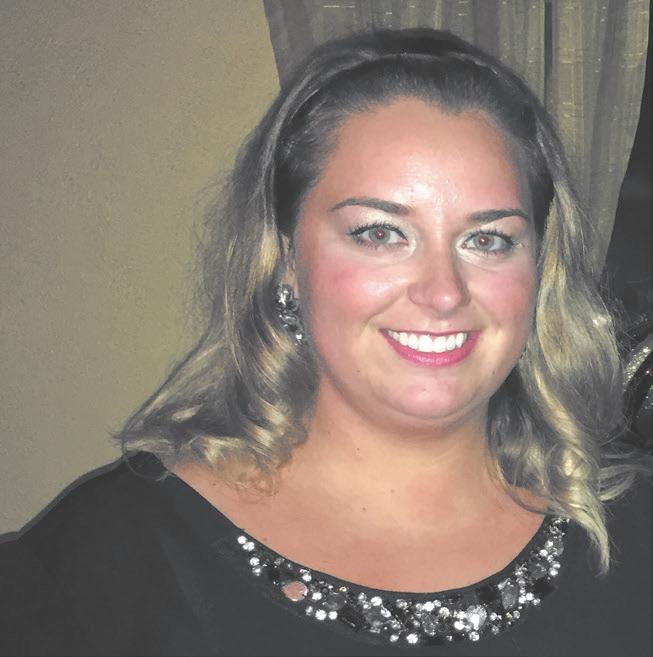
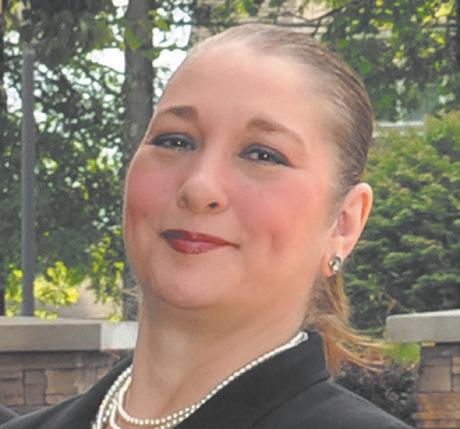








Survivors of heart attacks or strokes may have additional health and personal care needs, often relying on a family member or close friend to help. While caregivers take on a valuable role, they also pay unique physical and emotional tolls.
In fact, a growing body of scientific research shows people who serve as unpaid caregivers may not get the care they need to live longer, healthier lives, according to the American Heart Association, which is celebrating 100 years of lifesaving service.
Caregiving typically involves a range of duties from providing health care services, such as changing bandages and giving medications, to helping with personal needs like bathing, dressing and meal preparation. Administrative tasks like scheduling medical appointments, filing insurance claims and paying household bills may also be necessary.
The Centers for Disease Control and Prevention reported 1 in 5 U.S. adults provides some form of regular care or assistance to a family member or friend with a health problem or disability; 58% are women and nearly one-third provide care for at least 20 hours per week.
“The typical caregiver likely has an ever-growing and changing to-do list and most of them probably do not add ‘take care of myself’ to that list,” said American Heart Association volunteer Lisa Kitko, dean of the University of Rochester School of Nursing and vice president of the Uni-
versity of Rochester Medical Center.
“While caregiving can be a very rewarding experience, it can also take a huge physical and mental toll on even the strongest person.”
Prioritizing your own physical, mental and emotional health allows you to better help your loved one, Kitko said. Consider her tips for caregivers to care for themselves:
• Knowledge is power. Learn everything you can about your loved one’s condition.
• Set boundaries. Say “no” when it’s appropriate, don’t dwell on what you can’t change and recognize you’re trying your best.
• Maintain a healthy diet, limit caffeine and get adequate rest.
• Stay current with your own medical and dental appointments. Inform your health care provider if you’re experiencing any signs of depression.
• Find a support system. Share your feelings with someone who wants to listen or understands what you’re feeling, like the American Heart Association’s online Support Network, which includes a section just for caregivers.
• Nurture your spiritual life and focus on things you’re grateful for each day.
• Make time for yourself and friends. Participate in activities you enjoy, including regular physical activity.

• Be prepared for possible medical emergencies. If you’re caring for someone at risk for heart attack or stroke, recognize the warning signs and call 911 if he or she experiences any. Learn Hands-Only CPR; research shows most out-of-hospital cardiac arrests happen in the home. Be ready to save a life by calling 911 and pushing hard and fast in the center of the chest.
“‘Take care of yourself so you can take care of others,’ are definitely words to live by for caregivers – everyone tells you that and it certainly makes sense, but it’s hard,” Kitko said. “There is a lot of stress associated with knowing someone is depending on you … That is why taking care of yourself really should be the first item on your caregiver checklist.”
Learn more about caregiving and cardiovascular disease at heart.org. ◆

Are you suffering from
Have you Been Diagnosed with a Bulging, Herniated or Degenerative Disc?

Sciatica and herniated discs are often misunderstood
They can cause pain and numbness in the back, neck, legs and feet. This pain a ects everything that you do, from work to play, and ultmately your quality of life. We are here to tell you that there is hope. We have the technology and eperience to help you nd relief from sciatica and back pain. At DISC Centers of America, we have helped thousands of pain su ereres just like you. We o er only the most advanced non-surgical treatments.
It is true that surgery may be the answer for certain types of back injuries. When considering your options, ask yourself this question. If there is a solution to back pain that doesn’t require surgery, it it worth exploring?



Did you know that 30 million Americans su er from back and neck pain every day?



Before you consider surgery consider these points
Back surgery can cost $50,000 to $100,000 or more
Recovery can be very painful and can take months or years
Surgery may or may not relieve your pain
Dependence on prescription drugs may occur after surgery
Missed work can amoint to $1000s in lost wages
Outcomes may be uncertain, and surgery is not reversible



The Solution: The DRT Method (Disc Restoration Therapy)
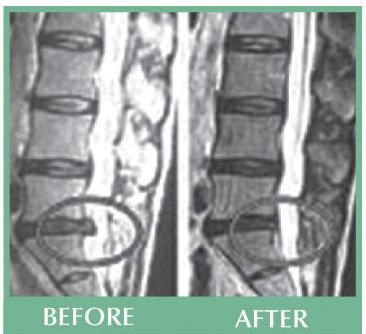
The DRT Method is a 5 step "S.P.I.N.E. approach to healing & restoring function to discs.
Spinal Decompression
Physiotherapy
Inter-Segmental Mobilization
Nutritional Support
Exercise
Rehabilitation
The DRT method allows for a much higher suzzess rate by increasing hydration and restoring health to your discs. The results in a more e ective and lasting solution to your pain. There are no side e ects and no recovery time is required. This gentle and relaxing treatment has proven to be e ective.. even when drugs, epidurals, traditional chiropractice, physical therapy and surgery have failed.. Disc Restoration Therapy has shown dramatic results.
Who is a candidate for Disc Restoration
It is our opinion that patients should exhaust all non-surgical/non-invasive treatments rst before considering surgery.
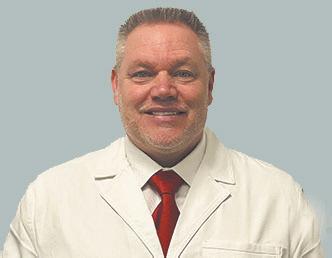
Dr. Tony Wano, DC CCSP FACACN Member, DCOA Disc Centers of America • 20 Years experience • National Certi cation in Spinal

Includes
1. Free Consultation with Dr. Tony Wano, DC CCSP FACACN
2. Complete Orthopedic and Neurologic Eval
3. MRI/X-Ray Review
4. Report of Findings
Why DISC Centers of America?
Dr. Tony Wano, DC CCSP FACACN and his team have vast experience in treating patients su ering from moderate to severe disc disease. Dr. Tony Wano, DC CCSP FACACN is certi ed by and is also part of the Disc Centers of America Team who are a national group of doctors that have gone through extensive training that follow the protocols set up by The International Medical Advisory Board n Spinal Decompression, and follow the protocols set forward by Dr. Norman Shealy the Honorary Chairman, former Harvard professior, and probably the most published doctor in the world on spinal decompression therapy.
Today
If you su er from sciatica, severe back or neck pain, you can nd relief! If you are serious about getting your life back and eliminating your back and neck pain, my sta and I are serious about helping you and proving how our technology and experiene can help. We are extending this o er to the rst 30 callers. These spaces ll up quickly, so call today to reserve your spot.



The Great Cross at Jumonville peeks out from the top of the summit on Chestnut Ridge in North Union Township.
By Mike Jones
The Great Cross at Jumonville, which for 75 years has been an enduring symbol of faith and hope to those who visit the United Methodist retreat center or travel by its perch on the summit in Fayette County, is beginning to show its age.
The cross has been painted in the past, but there are obvious blisters on the structure and the floodlights that illuminate the 60-foot-tall steel cross have been shattered by vandals.
In response, the Jumonville Camp & Retreat Center held a celebration and worship service Saturday to mark the 75th anniversary of the cross – which was dedicated Sept. 9. 1950 – and kick off a fundraising campaign to restore it. Heather
Withrow, who is president of Jumonville, said they hope to raise $75,000 for the restoration project that is set to begin next year, and an additional $75,000 that will be used for ongoing maintenance.
“The cross needs to be sandblasted all the way back to the steel and painted,” Withrow said. “This is the kickoff.”
The open house on a sun-splashed Saturday
afternoon attracted many people who have visited the camp and retreat center on Chestnut Ridge in North Union Township, bringing back happy memories. Those who trekked up the winding path to the top of the hill – which overlooks Uniontown and offers a 50-mile view of three states and seven counties – talked about the special place the camp and its centerpiece attraction hold in their hearts.
Laurie Yonika of Eighty Four has visited a dozen times, but she marveled at the sight of it all like it was her first visit.
“This is a very special place to me,” Yonika said. “It’s so peaceful. I feel closer to God up here. It’s hard to explain the feeling.”
It became even more special when her boyfriend, Jimmy Taylor of Washington, proposed to her in the shadow of the cross as the open house began Saturday afternoon.
“This is such a special spot for her,” Taylor said. “I knew it would be meaningful.”
Withrow tried to encapsulate what the camp and the Great Cross has meant to generations who have visited.
"The easy answer is God’s presence,” she said before breaking it down with three words. “But in 2025, in the climate the world is in, ‘peace, belonging and safety.’ Especially for teenagers.”
Young people and adults alike have been coming to the United Methodist camp and retreat center since its founding 1941. The main building on the campus dates back to the 19th century when the grounds were used as an orphanage following the
Civil War. The United Methodist Church took ownership of the campus in 1940 and opened the camp the following year.
Jenna Uric, who has been a volunteer for a dozen years, regularly makes the nearly 90-minute drive from her home in Sarver, Butler County.
“The community, the staff, the campers are some of the most amazing people,” Uric said. “It never gets old.”
She helped people glue stained glass to a miniature cross under a tent where other volunteers offered visitors stories and explained the fundraising campaign. Uric then literally rolled up her sleeves to help, showing off a tattoo she had inked on her right arm in June displaying the Great Cross and the winding path people take to visit it.
“This is my favorite place on Earth,” Uric said. “It’s just so calm and peaceful. To bring people up here to experience it, it’s so great.”
After people milled about the summit, they descended down to the main campus later in the afternoon, for a worship service led by Area Bishop Sandra Steiner Ball. For more information on the fundraising campaign for the restoration work, go online to www.jumonville.org. ◆

By Elanor Bailey
Sarah Knight of Upper St. Clair is the healthy living director at the Spencer YMCA in Bethel Park.
So why was she eating an ice cream donut at 10 a.m. on Aug. 6 in front of Bethel Bakery with her daughter, Sylvia, and her client, Joan Horoho of Mt. Lebanon?
“This is our training session,” she joked. “Kinda crazy,” she added, “but a good kind of crazy.”
Knight was not alone. Hundreds of customers lined up for the confection, created specifically for Bethel Bakery’s 70th anniversary celebration.
The glazed donut was split in half and filled with ice cream made at the Penn State Creamery. Peach, vanilla and “Death By Chocolate” were flavors from which customers could choose.
“Delicious,” said Kevin Hancovsky, who picked peach.
A Bethel Bakery employee, Hancovsky had the day off but came to the establishment for the celebration and the sweet confection.
“It’s a combination they have never had before, but it’s really good,” said Hancovsky, who recently graduated from PennWest Edinboro with a degree in fine arts.
The Walsh family, which has owned the bakery since 1955, saw friends from Busken Bakery in Cincinnati demonstrate the concoction at a convention in Atlanta in March 2020.
“We saw them do this concept out of a food truck and I have always wanted to try it,” said Stephen Walsh, who assumed ownership of Bethel Bakery from his father,
John, in 2023. “This was the perfect event to bring it out for and being a Penn State graduate, it had to be Creamery ice cream.
Because August is Peach Month, that flavor had to be picked, Walsh added.
The specialty donut is not a permanent item on the menu.
“It’s just for special occasions,” Walsh said.
Bethel Bakery’s 70th anniversary was significant because it celebrated the day Morris and Anna Walsh opened the franchise out of a three-car garage building located a few shops from the current location on Brightwood Road in Bethel Park. Morris, 95, passed away on Jan. 2, 2024.
“We miss him. We all do,” Stephen Walsh said. Walsh noted that on Aug. 1, the actual day the bakery opened, he and his dad, John, walked down to the location on the corner of South Park Road after their work day had finished.
“Standing there it’s hard to imagine my grandfather on that day, 70 years ago, and opening the bakery in those three garages and what it’s become not just for our family but for the community. This space is where his dream started and continues.”
On a typical busy Saturday, the celebration continued until 4 p.m. Customers were able to purchase buttercream tarts specifically designed for the occasion as well as participate in activities that included a “Guess The Ingredient” game, cookie decorating, airbrush tattoos and a free photo booth.
Laura Whitfield enjoyed the event with her daughter, Mackenzie. They successfully identified six of the seven ingredients that went into a confection.
“This was very cute,” Whitfield said. “A very fun event for the kids.”

While the Whitfields were partial to the mini cheesecakes, Yum Yum cupcakes and muffins the bakery makes, the Swanson family favored the donuts. “The ones shaped like a pretzel,” said Nate.
The Swanson family relocated to Bethel Park 13 years ago when Mark started working for BNY Mellon. While his wife, Marissa, is from the North Hills area, Mark is from Warren. They have two additional children, Alex and Madeline.
“We usually stop at the bakery every couple of weeks and our in-laws live down the road. So we are driving by here all the time,” Mark said.
“This reminds me of my hometown,” he added. “It’s a great community here. I feel like we have a small-town mentality here yet you have the amenities of the big city just minutes away.”
Eileen Rosleck from Carrick attended the party with her friend, Kathleen Emery of Brentwood.
“Best cakes ever,” Rosleck said. “When my family has a birthday, it’s Bethel Bakery. Lots of bakeries are good, but we’ve been coming here for so many years. They’re worth the trip.”
Even from the YMCA, which is a short walk from Bethel Bakery.
“It’s a mile and a quarter,” said Knight. “We actually walk from the Y to Bethel Bakery. So that’s a good way to work off the donut. We loved it, and we absolutely love Bethel Bakery.”
























Stay safe when using the Internet with these tips from StaySafeOnline.org:
KNOW THE RED FLAGS If anyone insists on payment by a wire transfer or gift card, it’s a scam. Hang up or delete!
VERIFY TO CLARIFY Be suspicious of emails, texts or calls that create a sense of urgency and require you to give your credit card number or bank account information. Hang up or walk away and contact a trusted source to verify the legitimacy of the request.
WHEN IN DOUBT, THROW IT OUT Links and online advertising are the easiest way for cyber criminals to get your sensitive information. Be wary of clicking on links or downloading anything you were not expecting.
KEEP A CLEAN MACHINE Keep all software on all Internetconnected devices current. These updates not only improve the security of your device, but also improve its functionality.
LOCK YOUR DEVICES Use a passcode to unlock your phone.
MAKE A LONG, UNIQUE PASSPHRASE A strong passphrase is a sentence that is at least 12 characters long. Focus on things you like and are easy to remember.
SHARE WITH CARE Be cautious about how much personal information you provide on social media.
PERSONAL INFORMATION IS LIKE MONEY. VALUE IT. PROTECT IT.




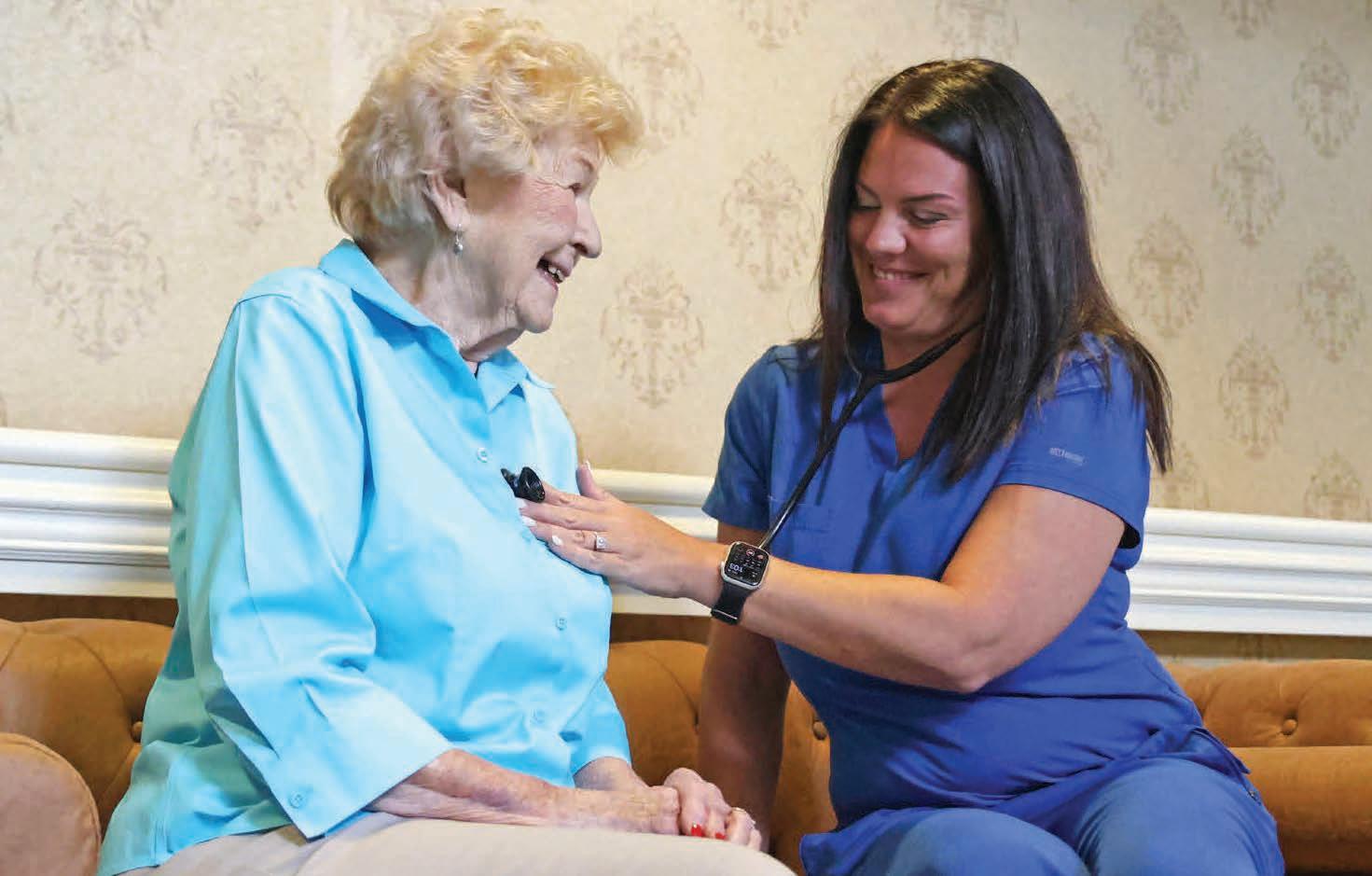



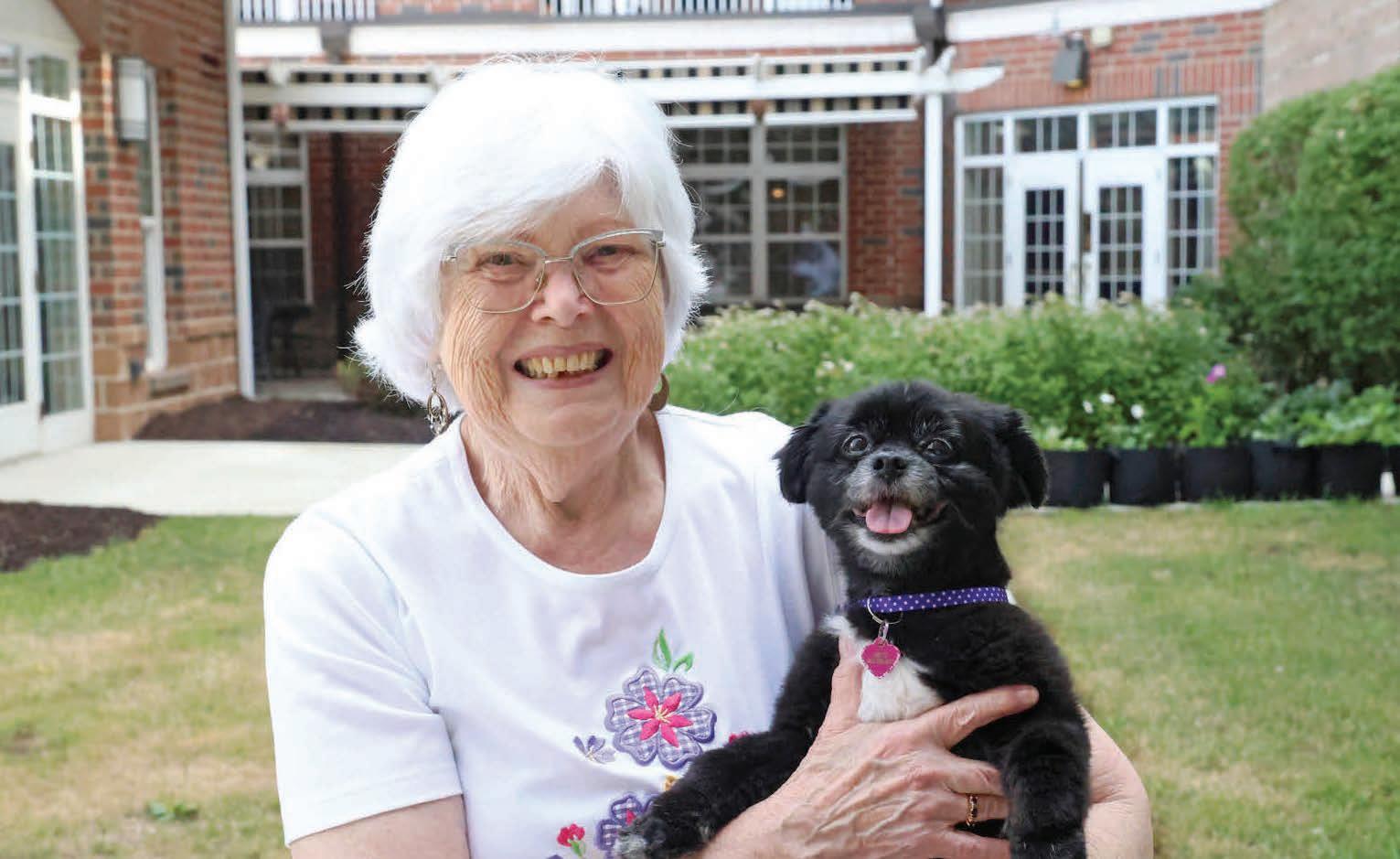
Caring. Comfort. Healing. It’s what you’ve come to expect from Concordia, whether in one of our residential communities or in your own home. We’re dedicated to offering high-quality care to the Pittsburgh South region now and in the future – with what we believe is the best in value in the area. Compare Concordia of the South Hills, Concordia of Bridgeville, Concordia Visiting Nurses and Concordia Hospice of Washington to other providers and see what makes our services the best of the best.










Learn more about our mission, locations, services and career opportunities at www.ConcordiaLM.org or connect with us on social media.


The World Stroke Organization notes that more than 12.2 million individuals experience stroke each year across the globe. Perhaps even more telling, the WSO reports that, globally, one in four people over age 25 will have a stroke in their lifetime.
Stroke is indeed a threat to public health. However, despite the prevalence of stroke, individuals are not helpless against it. Various risk factors for stroke are within individuals' control, and it's never too early for adults to prioritize stroke prevention. With that in mind, the following are some of the most common risk factors for stroke, courtesy of the WSO.
Elevated systolic blood pressure: The American Heart Association notes that an elevated systolic blood pressure means the upper number on a blood pressure reading is between 120 and 129. Systolic blood pressure measures the pressure your blood is pushing against the artery walls each time the heart beats. Individuals diagnosed with elevated systolic blood pressure are urged to discuss the ways to lower that number, as the American Stroke Association notes high blood pressure is the most significant controllable risk factor for stroke.
High body mass index: A 2022 study

published in the journal PLOS One found that body mass index was associated with stroke risk among diabetes patients. The study found that the risk of ischemic stroke, which occurs when a blood clot or fatty plaque blocks a blood vessel in the brain, was higher among obese patients compared to patients who are overweight or normal-weight.
Smoking: The WSO reports that someone who smokes 20 cigarettes a day is six times more likely to have a stroke compared to a non-smoker. One of the links between smoking and stroke risk surrounds carbon monoxide and nicotine. Smoke from cigarettes contains both carbon monoxide, which reduces the amount of oxygen in a smoker's blood, and nicotine, which makes a smoker's heart beat faster. Those variables combine to raise blood pressure, which has already been noted as a significant risk factor for stroke.
Alcohol consumption: A 2022 study published in the journal Neurology examined the link between alcohol consumption and stroke. The study found that high levels of alcohol consumption are associated with a higher risk for all types of stroke, and even moderate intake, defined as between seven to 14 drinks per week for women and seven to 21 drinks per week for men, was associated with higher risk for all types of stroke.
These are not the only common risk factors for stroke. In fact, the WSO reports high fasting glucose, air pollution, low physical activity, poor diet, high LDL (i.e., "bad") cholesterol, and kidney dysfunction are some additional common risk factors for stroke.
Though stroke affects more than 12 million individuals across the globe each year, many of its more common risk factors are manageable. More information about stroke is available at stroke.org. ◆
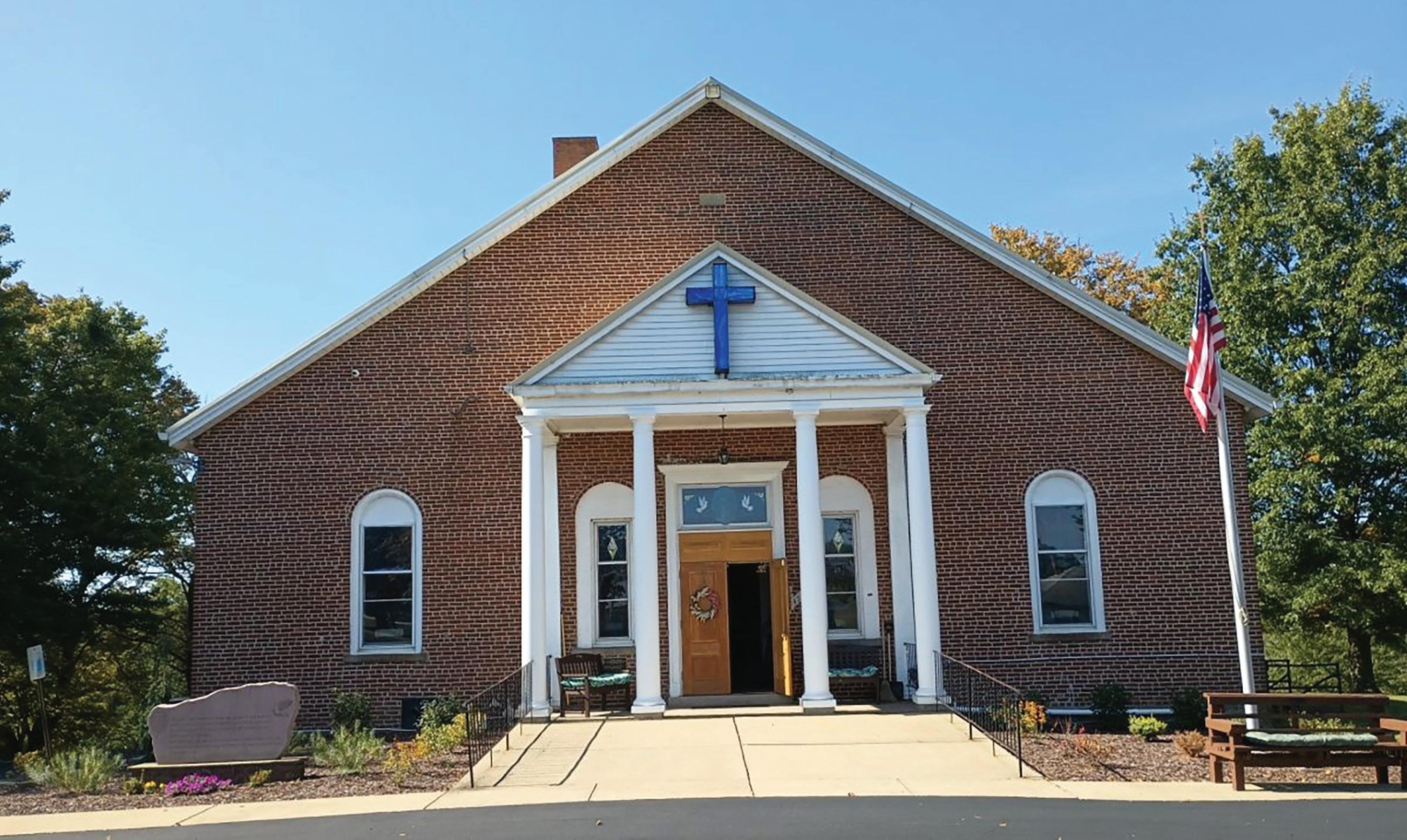
By Paul Paterra
Pigeon Creek Presbyterian Church is marking its anniversary with a celebration of a history dating back to before the signing of the Declaration of Independence.
The church at 45 Church Road in Eighty Four started celebrating its 250th on Sept. 26 with a car cruise, food and DJ. On Sept. 27, there was a number of activities including a vendor, food trucks, bake sale, toucha-truck and face painting. At 5 p.m., the Ringgold String Band performed.
To wrap up the weekend on Sept. 28, the 10:45 a.m. service was conducted by former pastor, the Rev. John Dykstra, who received a calling to another church in 2024
after almost a decade as pastor of Pigeon Creek.
“Our slogan is 250 years of faith and fellowship,” said Tara Schmidt, chair of the anniversary celebration. “So, we just wanted to celebrate that. We just wanted to spread the word that we’re here.”
“We want to show off our history,” added longtime parishioner Robert Devore.
Early settlers in the area crossed the Monongahela River at Monongahela, originally named Parkinson Ferry, an important body of water for westbound settlers. As they moved up the valley along a large creek, flocks of pigeons were seen, so the creek became known as Pigeon Creek.
The church was part of the first pastoral charge established west of the Allegheny Mountains.
The Rev. John McMillan, the area’s father of Presbyterianism, preached the first sermon to the congregation on Aug. 29, 1775. McMillan became pastor of the United Congregations of Pigeon Creek and Chartiers, which recently celebrated its 250th anniversary. McMillan continued at Pigeon Creek until 1800 and Chartiers Hill Church until 1830.
“We always have a friendly banter between us and Chartiers Hills as to who’s the oldest,” Devore said with a smile, before adding Chartiers Hills may get the nod since McMillan is buried in that church’s cemetery. “I’ve looked at some of our dates and they’re similar to theirs.”
Pigeon Creek is believed to have erected its first building, a round log church, in 1778, near the center of its current cemetery. The second building, finished in 1800, was built of stone.
The present brick church was built in 1829 at a cost of $2,714, which included plastering, pews and other amenities. The building has been repaired and remodeled since, with the last major remodeling in 1950.
“There wasn’t a basement here,” Devore said. “The men of the church dug this base-
ment out. Everything was done by hand. I can remember when I was about 7 years old opening the door and seeing a big hole and men down there working. In the old days, when something needed done, the men of the church just did it.”
The church cemetery is among the oldest in the area. The first of four sections was estimated to have been laid out in 1777.
There are 1,660 recorded burials, but it is believed there are more. Thirty-one Revolutionary War veterans are interred there, along with four veterans of the War of 1812 and 23 Civil War veterans.
Devore, 82, has a longtime connection to Pigeon Creek Presbyterian Church, noting
he was brought to the church when he was just 6 months old.
“I was brought up here,” he said. “It’s like home to me. I can remember when I was a kid in youth Sunday school. I can remember the pastors we’ve had since 1950. It’s just part of my heritage because I’ve been here.”
His wife, Kathleen, has been a member since 2004.
Currently, about 45 of the church’s 100 or so members attend the weekly service at 10:45 a.m. Sunday. But like many other churches, membership has dwindled over the years.
“We used to get 80 to 100,” Devore said.



“The younger people aren’t coming. I can remember coming here and the church was full.”
The parish is searching for a new pastor after Dykstra’s departure.
“We’re going through the process,” Devore said.
But through it all, Pigeon Creek Presbyterian Church has stayed afloat since 1775.
“I think it’s the promise of God,” Devore said. “We’re suffering the same thing that other churches are, but we always say,’God’s been leading us here for 250 years. He’s not going to let us down.'” ◆
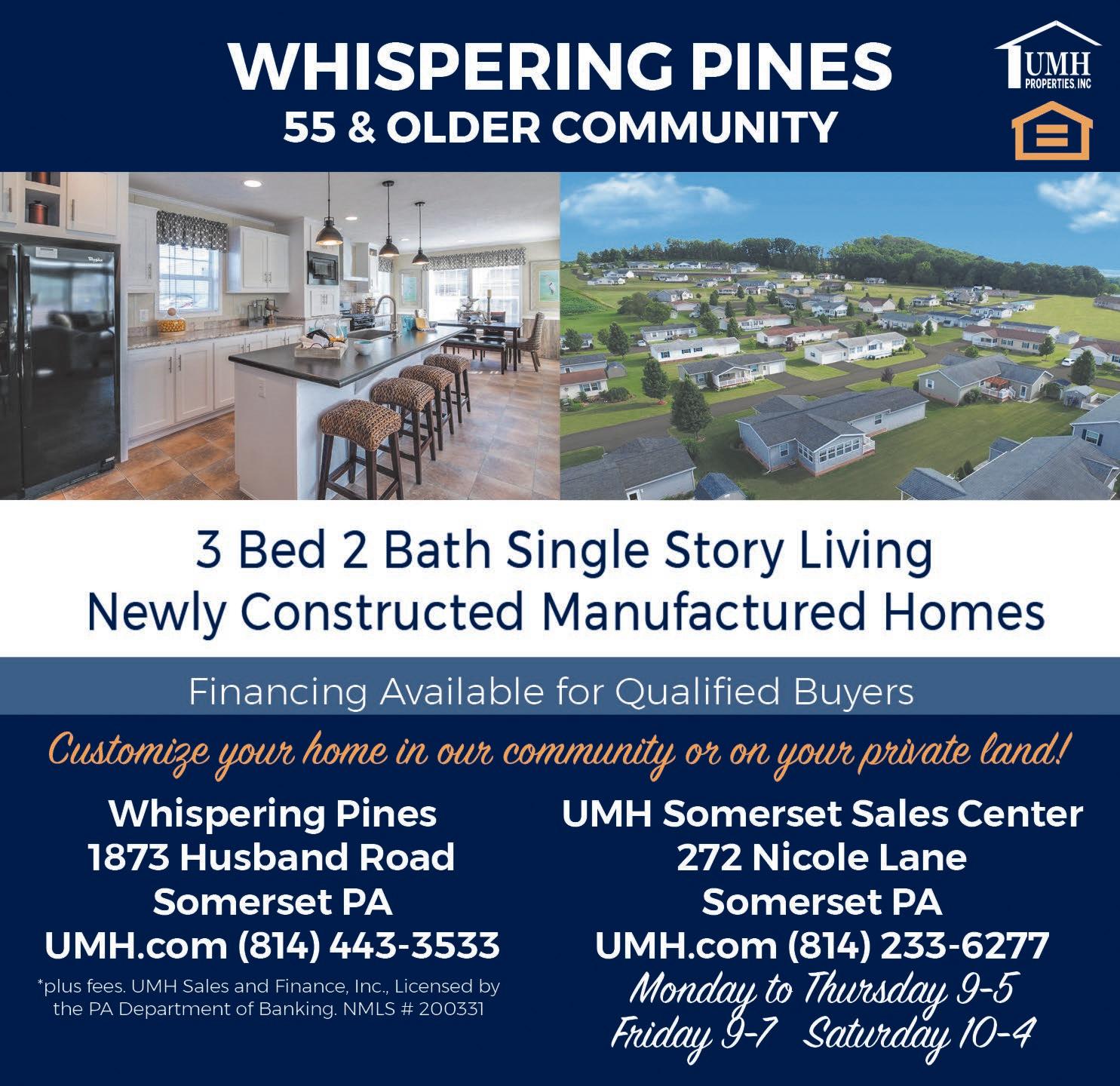
By Mike Jones
It doesn’t seem to be much of a mystery as to how the village of Dry Tavern in the northeastern corner of Greene County got its name.
“There was a tavern that did not serve alcohol,” said Rea Redd, who is director of the Eberly Library at Waynesburg University. “They were sprinkled throughout many states. ‘You can expect a meal and stay over, but we don’t serve alcohol.’ That was a trend in the early United States.”
While it’s quite obvious that a dry tavern once stood at the center of the unincorporated village in Jefferson Township, very little is known about the history of the tavern itself. It’s believed the inn was built along a heavilytraveled path in eastern Greene County to serve those who were passing through in the early 1800s.
“There isn’t a historical marker that says this is the original dry tavern,” Redd said.
But its location is thought to be somewhere near the crossroads of present-day Route 88 and Route 188 almost exactly halfway between Carmichaels and Clarksville, but the name and how long it operated are unknown. When Dry Tavern became a dot on the map is also a mystery.
According to “Local History of Greene County and Southwestern Pennsylvania” by Andrew J. Waychoff, the location was important because many travelers passed by it while heading north and south just a few miles west of the Monongahela River, making it a popular stopping point along the way.
“This was prominent because it was located on the principal road leading from Pittsburgh to Virginia, and is said to have had for years the most travel of any north and south road west of the mountains,” according to Waychoff’s book.
A map from 1790 at the Cornerstone Genealogy Society in Waynesburg shows there was no town named Dry Tavern at the time, with the location marked only as “The Park.” Another map from 1876 also doesn’t label Dry Tavern, with the parcel near the crossroads owned by a Miss R+M Martin and Wm. Devall, according to the map. Redd isn’t surprised by the lack of a formal designation since it’s a village tucked in Jefferson Township and has never been its own municipality.
But the “dry tavern” itself was an important and prominent directional marker for people living in the area at the time, as evidenced by multiple citations in the Waynesburg Republican around the turn of the 20th century, according to the newspaper’s archives stored at Cornerstone.
In one story from Aug. 12, 1884, about a ghastly collision between two bicycle riders and a horse-drawn buggy carrying two women who were badly injured, the newspaper describes the accident as happening “near what is known as the ‘Dry Tavern’ on the road.” Other articles in 1919 use “the dry tavern” as an explanation for where a new concrete road was being built from Waynesburg past Jefferson and onto modern-day Dry Tavern. It is even cited in newspaper stories to help explain directions for church group meetings.
But that all changed in 1921 after the concrete road was completed and the newspaper’s articles began referring to the area as Dry Tavern, removing the quotation marks and formalizing the title with capitalization.
Still, whatever happened to the tavern itself remains somewhat of a mystery.
An Observer-Reporter news story in September 1988 described the building as a “large” tavern that didn’t serve liquor, nor did it have a bar.
“Everyone who stopped over knew they could not get a drink of spirits,” according to the story.
Redd theorized the owners of the tavern might have had deeply-held Christian beliefs, which could have persuaded them not to serve alcohol at their inn.
“Maybe it was a dry congregation,” Redd said. “So there could be that aspect of it.”
But Dry Tavern is dry no more. Not with Caputo’s Dry Tavern Inn at what is thought to be close to where the inn once stood. The restaurant on Route 88 that is owned by Alice Caputo doesn’t have any connection to that original tavern once located nearby, but customers still enjoy a touch of irony that comes with her establishment’s name.
“Everyone thinks (the history) is great,” Caputo said in a 2018 interview about her restaurant’s name harkening back to the original dry tavern. “They buy shirts and hats.”tore, who has been the executive director for 14 years, said 92% of the people who visit the museum live outside of Washington. ◆


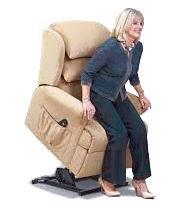



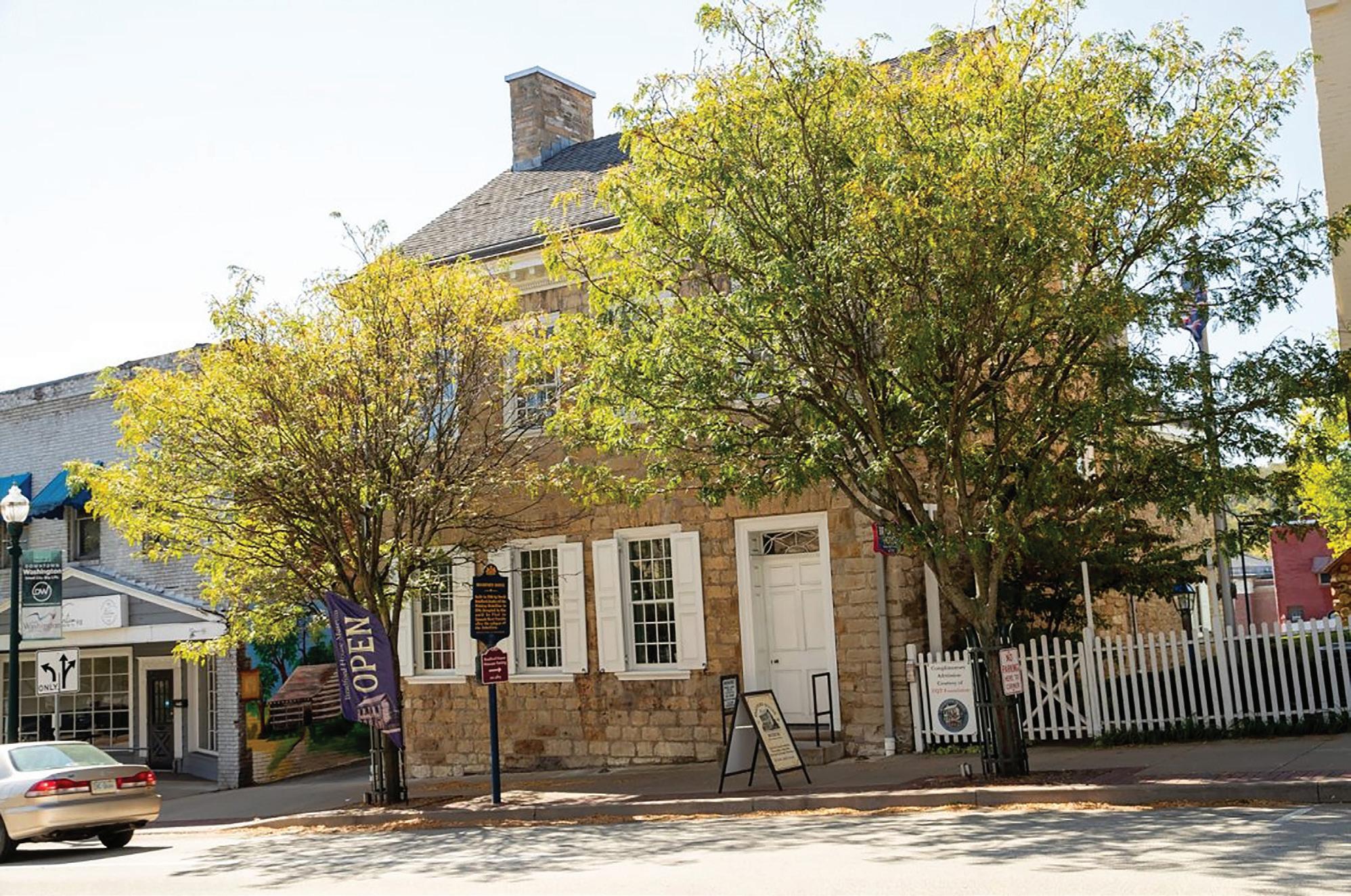
By Paul Paterra
The Bradford House Museum is turned 60, and its historical association marked the occasion with a celebration on Sept. 14.
Guided tours of the museum at 175 S. Main St. in Washington took place throughout the afternoon, as well as tours at the Whiskey Rebellion Education & Visitor Center and the Meeting House, across Main. There was also cooking demonstrations in the kitchen cabin.
Tracie Liberatore, executive director of the Bradford House Historical Association, said the museum opened July 13, 1965. But the 60th anniversary celebration was pushed to September since the July date
was near the city’s Whiskey Rebellion Festival.
“We opted to celebrate in the fall instead of the actual date, because it’s an all-year celebration,” she said. “We had a free community event utilizing all three of our spaces. The house was full of our docents who are educated in our house. It was an open house, so you came and went as you wished.”
The celebration also included live music with the Wayward Companions, a historical music ensemble, performed in the garden and expert fiddling was provided by Alex Brown at the Meeting House.
The Meeting House also hosted George Dobich and his art exhibit centered around
Washington County.
“He has quite the art collection,” Liberatore said.
There was also a lively, family-friendly musical “argument” between Alexander Hamilton and a beleaguered farmer.
Complimentary refreshments were served, and commemorative gifts were given out.
The museum was the home of Washington attorney David Bradford, a leader of the Whiskey Rebellion. He built the house –the first stone house on South Main Street – in 1788. By frontier standards, it ranked as a mansion.
He and his family lived in the home for just six years, until 1794, when he fled following the Whiskey Rebellion, an insurrection that was caused in part, by the lack of federal courts, large numbers of absentee landlords, conflicts with American Indians, and most importantly, the high excise tax on whiskey
President George Washington ordered 13,000 troops to the Washington area as the first test of the power of the new government. Suspected rebels were arrested and because of that fear, Bradford fled to Spanish West Florida (now Louisiana). Eventually, Bradford was pardoned by President John Adams.
The house actually was close to demolition. In the 1940s, it became an eyesore, dirty and decayed, with its stone walls crumbling. Demolition seemed to be
the most likely course of action, but some citizens felt that would destroy the city’s most historical artifact.
In 1959, the Pennsylvania Historical and Museum Commission assumed control of the house and supervised a complete restoration. The Bradford House was designated a National Historic Landmark in 1983, the only historical landmark on Main Street.
In 2024, the Bradford House Museum welcomed more than 12,000 visitors. Liberatore, who has been the executive director for 14 years, said 92% of the people who visit the museum live outside of Washington.
“It means a lot for tourism and the businesses and the amount of revenue it generates,” Liberatore said. “Those 12,000 visitors are not just coming to see us. They’re shopping, they’re eating, they’re staying overnight at the local hotels. The economics of it are tremendous. We’re always a place for families to bring their outof-town guests. We’re really proud of that. Our goal is national recognition. We want people to know what the Bradford House is.”




Hearing loss is often seen as an inevitable part of aging. However, data from the National Institutes of Health indicates one in two people over the age of 85 has hearing loss, which suggests half of all individuals in that age bracket have no such issue. That should be encouraging to individuals concerned by the prospect of losing their hearing in their golden years.
The American Academy of Audiology notes that age-related hearing loss is known as presbycusis. Presbycusis can develop due to a combination of variables, including changes to blood flow and the structures of the inner ear as the body ages and shifts in how the brain processes
speech and sounds. Certain medications and medical issues, including diabetes and poor circulation, also can exacerbate age-related hearing loss.
Though some hearing loss as individuals grow older may be related to age, Father Time cannot bear all the blame when individuals begin to lose their hearing. In fact, the National Institute on Deafness and Other Communication Disorders, using data from the 2015-2020 National Health and Nutrition Examination Survey, notes that roughly 5 percent of adults between the ages of 45 and 54 have disabling hearing loss. Such losses are unlikely to be a byproduct of aging, and more
likely indicative that individual behaviors can affect the degree to which a person loses or maintains his or her hearing.
Preventive health care is vital to protecting the body long-term, and such main- tenance can include steps to safeguard hearing over the long haul. The Hearing Health Foundation notes the following are some simple ways individuals can protect their hearing in the years to come.
· Keep the volume down. The HHF ad- vises individuals listen to personal audio devices at 50 to 60 percent of maxi- mum audio level. Some smartphones are pre-programmed to alert users when they attempt to exceed these levels, and
users are urged to heed these warnings when adjusting the volume on their devices.
· Lower the volume the longer you listen. Prolonged listening at high volumes can be especially harmful to hearing, even if users are listening at 50 to 60 percent of the maximum audio level. If you intend to listen for a long period of time, lower the volume even further.
· Take listening breaks. The HHF recommends routine listen- ing breaks from personal audio devices. Individuals who listen to personal devices throughout a workday are urged to take breaks at least once every hour.
· Wear over-the-ear headphones. The HHF recommends in- dividuals choose over-the-ear, noise-cancelling headphones over earbuds. Over-the-ear headphones are more effective at creating a seal that blocks out ambient sounds, which means users are less likely to turn up the volume on their headphones than they might be when using earbuds.
Routine hearing examinations are an effective way to monitor hearing, and individuals are urged to make them part of their preventive health care regimen. When measures are taken to protect long-term hearing, individuals may find it easier to man- age age-related hearing loss if they experience it. ◆
Courtesy of Metro Creative












Children typically want to treat their parents to something special during the holiday season. Parents do a lot for their children, and when those kids become adults, a desire to express their appreciation for Mom and Dad grows.
According to The Wrap Up: Snappy's 2022 Holiday Gift Report, the majority of Americans (64.2 percent) report they need help when it comes to holiday gifting. They may want to carefully consider a recipient's interests, as the report also
discovered more than half of all Americans want a gift that reflects their personal interests and hobbies. When shopping for elderly parents, it may not be as simple as identifying interests, particularly if Mom and Dad are experiencing age-related health issues. Consider these gift ideas that may be ideal for the aging adults in your life.
· Cozy blanket: Older adults may have trouble regulating their body temperatures, which can translate to feeling
cold a lot of the time. A new blanket or throw for a bed or to cuddle up with in a favorite recliner might be the perfect gift.
· Family history book: Budding writers can interview their aging parents and jot down family stories. Those stories and anecdotes can be compiled into a book and combined with photos to make a family history log, which can be gifted back to the interviewee.
· Gripping slippers: Slips and falls can injure aging adults and put them out of commission for quite some time. Sturdy and secure slippers with anti-slip soles are good for getting around the house and making quick trips to take out the trash or get the mail.
· Robotic vacuum: Keeping up with the household chores is easier with a robotic vacuum that automatically scours carpets and hard-surface floors. This eliminates having to wrestle with a cumbersome vacuum.
· Key finder: A key finder can help adults find their keys if they are misplaced. Some employ radio frequency, while others utilize Bluetooth technology and can be paired to a smartphone.
· Magnifying light: Older parents who like to do puzzles or close-up work like knitting or stitching can benefit from an LED lamp that also has a magnifying glass built right in.
· E-reader: Avid readers may enjoy an e-reader because they don't have to find spots to store even more books in their homes. E-readers can be customized so the print is the right size for the reader's needs. Also, the devices are lightweight and easy to stow in a bag.
· Automatic card shuffler: Parents who are known card sharks around the community can use an automatic card shuffler to make card play even easier.
· Resistance bands: Resistance bands are
like large rubber bands that exert force to strengthen muscles and improve flexibility. They can help aging adults stay in shape in a low-impact way.
· Dining gift cards: When parents do not want to spend additional time in the kitchen, they may opt to visit a favorite restaurant. A combination of a gift card to a favorite establishment as well as prepaid taxi or ride share service ensures a good meal and a safe ride home.
Although they seem to have everything, aging parents still can benefit from some thoughtful gifts. ◆
Courtesy of Metro Creative

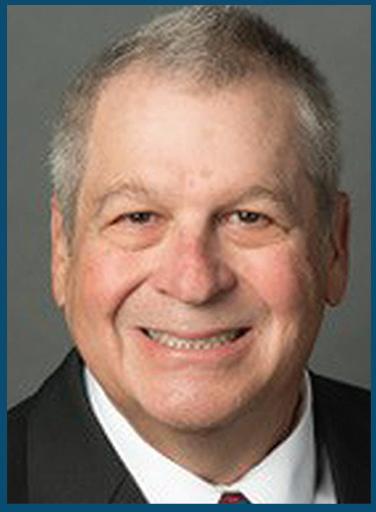




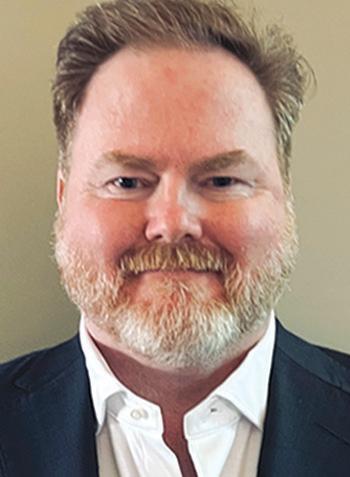

Three seconds go by in a flash, but that's enough time for another person to join the masses already diagnosed with dementia. According to Alzheimer's Disease International, every three seconds someone in the world develops dementia, a condition that more than 55 million people were living with in 2020.
The World Health Organization notes that various diseases and injuries that affect the brain can contribute to dementia. As menacing a threat as dementia presents, individuals are not helpless against it. In fact, exercise, which can help lower risk for heart disease, stroke and various other conditions, can be a valuable ally against dementia as well.
What is the link between exercise and dementia?
Dementia remains something of a mystery, but the Alzheimer's Society notes that evidence is now strong enough to support the assertion that lack of physical exercise increases a person's risk of developing dementia. The Alzheimer's Society also notes that researchers have discovered improvements in thinking and memory and reduced rates of dementia among middle-aged and older adults who exercised compared to those that did not.
Is cardio the most effective exercise at lowering dementia risk?
Speaking with CNBC, Silky Singh Pahlajani, a clinical professor of behavioral neurology and neuropsychiatry at Weill Cornell Medicine, noted that cardiovascular exercise, often referred to as cardio, can provide the biggest benefit for brain health
of any form of exercise. Cardiovascular exercise can increase heart rate, which helps deliver oxygen cells to the brain. The National Institutes of Health notes that oxygen shortages prevent the brain from working as well as it should, and a 2023 study published in the journal Redox Biology found that oxygen abnormality plays a crucial role in the occurrence and progression of Alzheimer's disease.
How should aging adults approach exercise if they have been largely sedentary?
Middle-aged and older adults who have not been physically active throughout their adult life but want to begin incorporating exercise into their daily routines are urged to speak with their physicians prior to beginning a fitness regimen. Preexisting
conditions may make it difficult, if not impossible, to engage in certain forms of exercise. A personal physician can consider a patient's unique medical history and then recommend certain exercises that won't put him or her in jeopardy of suffering an injury or illness. A gradual approach to exercising is typically best for individuals who have lived a sedentary lifestyle. Starting off slowly with a short walk or light physical activity like gardening can help the body acclimate to physical activity at a safe pace. As adults bodies' become more accustomed to exercise, men and women can then gradually increase the intensity of their workouts, switching from walking to jogging on a treadmill when possible.
There is no cure for dementia, but adults are not helpless against the various forms of the condition. Researchers have discovered that preventive measures like routine exercise can be an effective way to reduce dementia risk. ◆
Courtesy of Metro Creative

Aerobic exercises improve the health of your heart, lungs, and circulatory system.
Muscle-strengthening exercises can help you stay independent and prevent fall-related injuries.
Balance exercises help prevent falls and can improve stability.

A good night's rest can be just what the body needs to feel revitalized and ready to tackle a new day. Indeed, rest is important for people of all ages, including seniors.
The National Council on Aging notes the brain needs sleep to regulate the body, restore energy and repair damage. Recognition of that is vital for aging men and women, some of whom may be more vulnerable to sleeping problems than they realize. In addition to being more vulnerable to age-related health problems that can interrupt their sleep, thus affecting its quality, aging men and women may find their sleep routines change over time. For example, a 2019 study published in the journal BMC Geriatrics found that active elderly people reported it took them longer to fall asleep as they got older.
The NCOA says it's a misconception that older adults need more sleep than younger people, noting adults of all ages require the same amount of nightly rest. However, things may change for seniors in regard to how much time they need to spend in bed. The NCOA notes this is because adults may be more likely to experience poor sleep quality and continuity. When that occurs, adults still need the recommended minimum of seven hours of nightly sleep, but they may need to spend more time in bed since it's taking them longer to fall asleep.
It's important that aging adults recognize that they can spend too much time sleeping as well. A 2019 study published in the Journal of the American Geriatrics Society found that too much sleep is linked to the
same health problems as too little sleep, issues that include an elevated risk for heart disease and falls.
Sleep issues affecting older adults also may be a byproduct of various contributing factors. The NCOA notes that frequent contributors to sleep concerns include:
· Pain that affects the back, neck, or joints
· Mental health issues, including anxiety and depression
· Neurodegenerative disorders that are more frequent among aging populations, such as dementia and Alzheimer's
· Sleep apnea or disordered breathing at night
Restless leg syndrome, a condition that tends to worsen with age and is character-
ized by an urge to move limbs often
· Nocturia, a condition marked by a need to urinate at night
· Stimulating medications or medication interactions
· Decreased exposure to sunlight
· Sedentary lifestyle
Aging men and women who are experiencing difficulty sleeping should know that such issues are treatable and not something that needs to be accepted as a normal part of growing older. For example, individuals whose sleep is routinely interrupted by a need to urinate can avoid certain beverages, including alcohol and caffeinated drinks.
Sleep and healthy aging go hand in hand. Aging adults experiencing difficulty sleeping can consult their physicians and visit ncoa.org to learn more about overcoming sleep-related issues. ◆
Courtesy of Metro Creative











































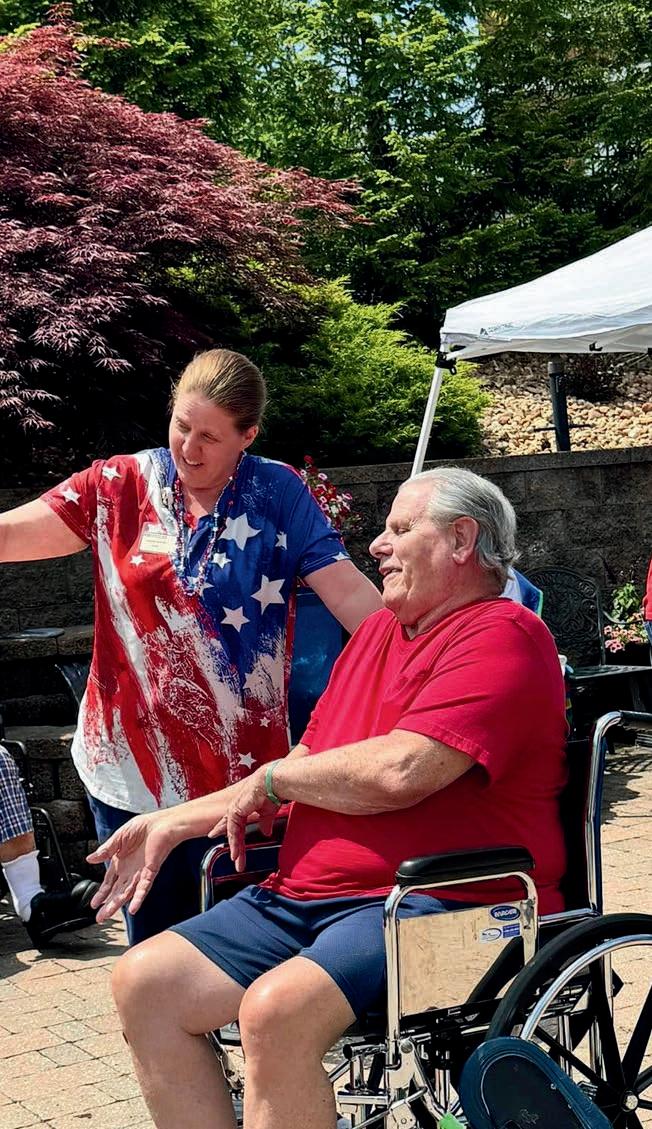

Now is the time to learn about your many options in western Pennsylvania! We are an independent Life & Health Insurance Agency representing Highmark BC/ BS; UPMC for Life and AETNA / Advantra Medicare Advantage Plans. Our office is easy to find with free off street parking and two comfortable conference rooms. We have licensed agents ready to serve you and your family 5 days weekly.

“There is just something about this
place.
As soon as we walked in, we felt it. Like nding the perfect house, you know it right away.”
—SHIRLEY JEWELL
Shirley and Tom Jewell relocated from Wexford to Phoenix for a life of partial retirement. For nine years, Shirley continued to work at a job she loved while Tom ardently golfed, enjoying the sport nearly year-round in sunny Arizona.
Then in 2016, Tom was diagnosed with Parkinson’s disease and possibly Lewy Body dementia. The disease, they were told, would not only affect him physically but he would also experience increasing dementia as well.
They hated to leave Phoenix, but their son and daughter wanted them close so they could help with Tom’s care. They found a patio-style house in Canonsburg with a walk-in shower and one- oor living to accommodate Tom as his mobility decreased.
Then, when Covid hit, they found themselves isolated. To mitigate the feeling of being on their own, Shirley enrolled Tom in the Woodside Place® of Washington Adult Day Services
The warmth of the team members, the clean, new, and bright space, and the programming—movement
exercises, interactive large screens, and a sensory room with stimulating lights, textures, and sounds—all made choosing Woodside Place® an easy decision.
Adult Day has provided Tom with socialization that has helped him cognitively and emotionally. When he comes home in the evening, he shares news from Adult Day with Shirley via a calendar the staff prepares that outlines everything he did during the day.
“The kindness, compassion, and caring of (team members) Tara, Tina, and Linda made Woodside a beautiful place,” Shirley said. “Adult Day has been very good for Tom.”
And for her, too. Now she doesn’t feel guilty or hesitate to take a day to just read her book, have lunch with somebody, or visit with her new granddaughter.
Shirley’s goal is to keep Tom with her for as long as possible. For now, it all works, and though she knows it’s not always going to be that way, she’s grateful for today and for Tom, the love of her life.
Because he’s my Husband


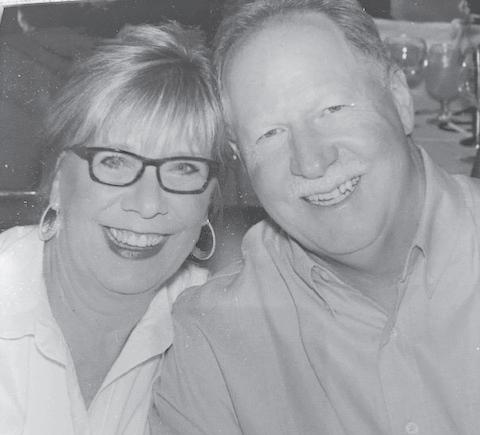
WOODSIDE PLACE OF WASHINGTON ADULT DAY SERVICES
Monday thru Friday, 7:30am – 4:00pm 954 Redstone Road, Washington, PA 15301
• Safe and secure setting with outdoor courtyard
• Supervision and monitoring by nursing team
• Assistance with activities of daily living
• Physical tness, interactive electronic technology, and creative arts programs.
To learn more, contact Tara Gleason at 724.250.4981 or tgleason@SrCare.org








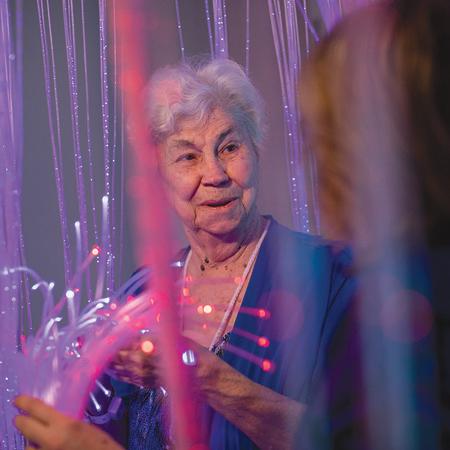










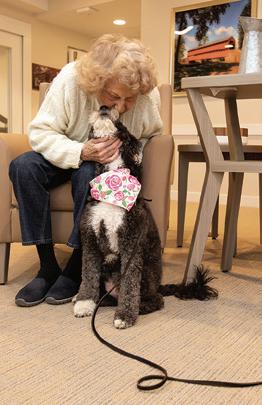





























A healthy heart is vital to a long life. Aging individuals recognize that link, and many take steps to protect their heart health, which may include changing their diets or exercising with greater frequency.

Recognizing certain threats to heart health is another important step individuals of all ages can take as they seek to live long, healthy lives. One such threat is atrial fibrillation, which is often referred to as "AFib."
Johns Hopkins medicine notes AFib is a type of abnormal heartbeat caused by extremely fast and irregular beats from the upper chambers of the heart. Johns Hopkins notes a person with AFib may have a heart that beats more than 400 times per minute, which is caused by faulty electrical signals that make the atria (the two upper chambers of the heart) contract much faster than normal.
The American Heart Association reports
that AFib increases the risk of heart-related death and stroke. But individuals may be curious about their risk for AFib. Though some of the risks for AFib, such as family history, may be beyond an individual's control, others can be managed with the goal of reducing the likelihood of developing the condition. The AHA notes that people who have one or more of the following conditions are typically at higher risk for AFib.
Age: Age is a significant risk factor for AFib. Johns Hopkins notes that adults older than 50 are at elevated risk for AFib. In addition, the AHA reports that medical researchers suspect the number of AFib cases will rise considerably in the coming years as people are living longer. Recognition of age as a significant risk factor for AFib might compel more individuals to take additional risk factors for the condition more seriously.
High blood pressure: The AHA reports that longstanding, uncontrolled high blood pressure can increase a person's risk for AFib. This link between AFib and high blood pressure underscores the need for annual health examinations, which often uncover the condition known as "the silent killer" due to the fact that it does not necessarily produce noticeable symptoms.
Existing heart conditions: Heart valve problems; hypertrophic cardiomyopathy, which is marked by a thickening of the walls of the heart chamber; acute coronary syndrome, an umbrella term used to refer to conditions in which blood supplies to the heart are suddenly blocked; and a history of heart attack are just some of the heart conditions that increase a person's risk for AFib. Anyone with a personal or family history of these and other heart conditions is urged to discuss AFib
with their physicians.
Alcohol consumption: Binge drinking increases risk for AFib, according to the AHA. The organization defines binge drinking as five drinks in two hours for men and four drinks in two hours for women. If individuals want to consume alcohol, Johns Hop kins emphasizes the need for moderate consumption, which is defined as one drink or less per day for women or two drinks or fewer per day for men.
· Activity levels: Though physical activity is an essential compo nent of a healthy lifestyle, the AHA notes that AFib is common in athletes. The condition can be triggered by a rapid heart rate known as a supraventricular tachycardia, which can be a by product of exercise.
AFib can pose a serious threat to individuals from all walks of life. Recognition of that threat and how to reduce AFib risk can be part of anyone's long-term health regimen. ◆ Courtesy of Metro Creative AND NEED HELP


7
























